Most people know Latvia because of its capital Riga, but the country also has an amazing coastline where small villages are sprinkled throughout green pine forests, sand dunes, and hiking trails. I spent a week driving west along the Latvian coast from Riga through parts of the regions Vidzeme, Zemgale, and Kurzeme.
The result is the Latvia itinerary below. It’s exactly what I did, including a few tips on extra things to do for places where I was a bit short on time. If you’re into beaches, beautiful architecture, nature, and peacefulness, this is the trip for you.
Contents
- One-Week Latvian Coast Itinerary
- Day 1: Jurmala and Kemeri National Park
- Day 2: Engures Ezers Nature Park, Kaltene, and Roja
- Day 3: from Roja to Ventspils
- Day 4: Uzava, Jurkalne, Alsunga, and Liepaja
- Day 5: Liepaja
- Day 6 and 7: Riga
- Stay connected while traveling around Latvia
- Don’t forget travel insurance!
One-Week Latvian Coast Itinerary
Day 1: Jurmala and Kemeri National Park
Jurmala is one of the main Latvian beach resorts, popular with rich Russians and because of its proximity to Riga. Even when you don’t want to rest on the beach all day long, there are plenty of things to do in Jurmala.
!Important: the Jurmala entrance fee
There is a fee of €2/day to visit Jurmala. You can get a ticket at machines spread throughout the city. I got mine from the machine at the tourism office’s parking lot. You can pay by card or by cash. More about this here.
While you do have to pay an entrance fee, public parking in Jurmala is free.
Jomas Street and Juras Street
Jomas Street or “Street of the parallel lines in the dune sands” is the main street in Jurmala. It’s about 1.1 km long, car-free, and has many restaurants, shops, and hotels on it as well as little wooden cabins that open up like market stalls the later it gets. The Tourist Information Center is also on Jomas Street, at the end of it.
In summer, Jomas Street becomes the scene of the Jomas Street Festival with performances, fairs, and other kinds of events. It lies parallel to Juras Street, which is fun to simply walk through for all the beautiful houses. 23 of the buildings here are state monuments.
At the end of Juras Street lies Jurmala’s Concert Hall, a beautiful building with a small square in front of it. You can also access the beach from here.
Jurmala’s train stations
I did it the other way around, though. I walked down Jomas Street until I reached the Majori train station. Jurmala has several stations which all look different and quite interesting at that.
What’s fun about the Majori station as well as the Dubulti station, which I visited next, is that they’re located across from the sea and you actually get a great view of the water from the platforms.
There’s no official road following the water line but there is a little path that people clearly “walked free” that goes between the tracks and the water. You can walk it without getting hit by a train but as I didn’t know at first how far the path went, I follow the road from the Majori to the Dubulti station.
I don’t know if it’s always the case, but there was a free photo exhibition at the Dubulti station.
Jurmala Beach
From there, I crossed the street and only had to walk for a few minutes past a beautiful church and – again – some pretty houses to reach the beach.
The sun was out and the wind was just strong enough to bring over that typical salty sea smell. It was pure bliss and so I decided to walk back to the center following the coastline.
If you prefer walking in the shade, there’s a little patch of forest that stretches along the beach and that has a path through it you can follow, parallel to the beach. As you’ll get closer to the center of Jurmala, you’ll see a few beach bars popping up.
It wasn’t busy when I was there (middle of May) but I’ve heard this is a real hotspot in summer and the many bins and benches along the beach (yes, benches on the beach, so cool!) attested to that.
Lunch at grill bar Lighthouse
For lunch, I went to the Lighthouse grill restaurant on Jomas Street, one of the best restaurants in Jurmala that serves traditional and seasonal Latvian dishes as well as seafood and the restaurant’s own grilled fish and meat. As I knew I’d be having cake later in the day, I opted for a Caesar salad with chicken.
That sounds simple, but it’s not easy to grill chicken so that it’s a bit crispy on the outside but nice and soft on the inside. This chicken was deliciously grilled. I also had a nice cappuccino at Lighthouse.
Kemeri National Park
After lunch, I took the car to go and do a hike at the Kemeri National Park. It’s a pretty big park with several trails in different areas and it lies right outside of Jurmala.
The hike I ended up doing is the one to the Kemeri Bog Board Walk Tower. That’s what the watchtower you get to climb during the walk is called on Google Maps and the easiest way to drive there is to enter either that as your destination, or “Kemeri Swamps”.
I had looked this trail up beforehand and found some GPS coordinates for the parking lot but they actually lead me to another parking lot at the park, where you can walk some forest trails.
You have to pay €2 when you enter the Kemeri Swamps parking lot and you need to pay in cash. There’s a lady there who welcomes you when you arrive and aside from your receipt, gives you a map of the trail with some info about what you’ll see – in English.
She’ll show you which way to head in, but you really can’t go wrong as there’s only one path starting at the parking lot. Where that starts, you also have the chance to go to the toilet at one of the toilet-above-hole-in-the-ground cabins. I did and it was better than going on one of those plastic movable toilets.
There is another set of these toilets before the actual loop trail starts.
Anyway, you follow the path and pass a little picnic area. A bit further, the path splits. As the trail is a loop trail, you can choose which way you go, but you’ll see there’s a sign pointing toward the left so left I went. From there you really just need to follow.
The only other choice you have to make is when the boardwalk splits near the end of the walk. Either you go straight to fully close the loop and go back the way you came, or you turn right which cuts of a tiny bit of the loop and leads you back to the path to the parking lot in another way.
Going left is a bit shorter but not much. It’s the route I took as I wanted to see how it would be different. This is what the whole walk looks like on Google Maps:
Good to know
To get there, you’ll drive along the A10 in the direction of Ventspils and then you’ll have to turn left somewhere. When you do, the road will quickly become somewhat of a gravel road. Just keep following.
You’ll pass the Kemeri cemetery which I found super interesting to see as it’s literally in the woods. No trees were cut to create a cemetery – or at least that’s the way it looked. Graves follow the terrain and are plotted in between the trees.
If you want to do this hike but depend on the train, that’s possible but it does require quite a walk before you reach the actual trail. You’ll have to take the train to Kemeri train station – “Ķemeru dzelzceļa stacija” on Google Maps – and then walk 3.2 km to the start of the trail.
To get there, go right when you stand with your back to the train station and walk a little until you reach the intersection with the road that goes over the tracks. Go over the tracks and keep going straight until the road splits and you can go slight right.
Keep going until you reach the A10, then cross that and keep going in the same direction. You’re now on the road that goes past the cemetery and to the start of the trail.
Failed: the Sloka watchtower
When I was researching Kemeri Park, I came across another trail, the Sloka trail. This is a trail of a little over a kilometer by lake Sloka that also goes past a watchtower.
After my first hike, I didn’t really feel like a second but I saw on Google Maps that you could drive towards the watchtower – or so it seemed.
Usually, I thoroughly research these things but as this seemed to be only a short detour on my way back to Jurmala, I decided to just give it a go. Bad idea.
To be honest, I don’t remember which point of interest on G Maps I drove to, but it was at the tip of one of those two dead end roads you see north of the lake called Akacis. Anyway, no need to look it up because there’s nothing there.
Perhaps, I would’ve caught a glimpse of the watchtower if I’d driven on but this was almost 3 km of dirt and gravel road and I sweated all the sweats driving it. It wasn’t that bad, but it’s just that in these cases, you don’t know what it’s going to be like the next few meters, and the next, and the next.
So when I got to the point where Google Maps said my destination was and all I could see was a little spot to look at the lake from (and no watchtower), I decided to head back. In the end, this little detour only cost me about 20 minutes and a few months of my life.
Which is why, when I got back to Jurmala, I needed to go to… Madam Brios.
Madam Brios
Now I had already planned to go to Madam Brios the day before as I’d seen it on Google Maps and just a few minutes later, someone who follows me on Instagram dm’ed me as she’d seen I was going to Jurmala and told me I had to have cake at Madam Brios.
I don’t know if it’s good or bad that people know they need to recommend cake places, but I’ll take it.
As I’d found this place by myself and it was recommended by a follower, I’d planned it for after my hike. And with that detour as a little extra “activity’, I could surely use cake by the time I got back.
As you might have guessed by now, Madam Brios is a coffee, tea, and pastry bar on Jomas Street. As I wasn’t that much in the mood for sweets (it does happen, not often, but it does), I chose a chocolate éclair. Now, I thought the chocolate part was only the top but the cream inside was actually also chocolate. Yummy.
I haven’t tried anything else here but can say the service was friendly and the interior is cozy enough to want to stay and recuperate for a little while.
Read more reviews on TripAdvisor
Other things to do in Jurmala
As I only spent a day in Jurmala and wanted to do that hike at Kemeri National Park, I didn’t get to do everything there is to in Jurmala. Here are a few more options if you decide to stay longer.
The Lielupe White Dune
The Lielupe White Dune is a protected dune by the river Lielupe that was formed naturally in the 18th century. It’s popular with locals who come here to swim, fish, and relax in summer. You can get some great views of the water from the dune as well.
Good to know
On Google Maps
Ethnographic Museum
The Ethnographic Museum of Jurmala is an open-air museum that showcases the lives of the local fishermen in the 19th and 20th century through no less than 2,000 objects.
You can climb on board two authentic fishing boats, check out the collection of anchors, learn how to make rope and patch nets the traditional way and even see some live fish-smoking on Thursdays in summer.
Plus, admission is free!
Ragakapa Nature Park
The Ethnographic Museum is located inside the Ragakapa Nature Park which is an 800 meter-long and 100 meter-wide dune with viewing platforms and an eco-trail where you can go for a quiet walk before or after your visit to the museum.
Jurmala City Museum
It’s also free to visit the Jurmala City Museum, which has a collection of over 60,000 objects and hosts both temporary and permanent exhibitions. The permanent exhibitions focus on the Jurmala and Kemeri beach resorts. One of them is a multimedia room focusing on the concepts of space and infinity.
Museum of Resort History
If you want to know even more about Jurmala as a resort, head to the Museum of Resort History at the Jantarnij Bereg health resort. Here you can see old medical equipment, photos, and documents related to the development of Jurmala as a resort town.
Where to stay in Jurmala
Villa Joma
Villa Joma is a beautiful wooden house right on Jomas Street. I know I’ve said “beautiful” and “pretty” a lot already, but there’s just no other way to describe the buildings in this town.
This Jurmala hotel has a free parking area for guests, WiFi is complimentary too and rooms are equipped with a private bathroom and desk. The on-site restaurant is open all-day-long and I enjoyed a lovely dinner there.
I first had a salad with cherry tomatoes, cucumber, salad, and trout as a starter. Then I had plaice fish with red onions, cherry tomato, bread crumbs mixed with herbs and celery cream as the main course and for dessert, I had the magnificent cold marzipan cake with a little sorbet and raspberries. Yum!
When the weather’s nice, you can eat out on the patio or simply enjoy a drink there after a day of exploring.
Breakfast is included in the room price and consists of a buffet.
Book a room / Read reviews on TripAdvisor
Good to know
If you use a GPS to get to the Villa Joma hotel in Jurmala instead of Google Maps, it might try to send you to Jomas Street as that’s the official address but Jomas Street is a pedestrian street. Google Maps knows it needs to send you to Kaudzisu Street, which is where the entrance to the hotel’s free parking lot is.
Day 2: Engures Ezers Nature Park, Kaltene, and Roja
Engures Ezers Nature Park
The Engure Ezers Nature Park is one of the largest nature parks in Latvia and home to all kinds of animals. Especially birds like it here, but you can also spot different cows and horses when hiking the Pathway of the Orchids – which is what I did.
I was only a little bit too early in the season to see the orchids but when you go at the right time, you can spot 22 different varieties.
I arrived around 10 in the morning and was the only person there. It was so peaceful, with the only sound coming from the many birds chirping.
The path goes past a watchtower which I wanted to climb and as the entire trail is only 3.5 km long, I thought I’d only spend an hour tops at the lake. In the end, I stayed there for two hours and only left because I wanted to see another place before my lunch reservation.
I hope the photos show you even if just a little how beautiful this area is.
To get to the watchtower, you need to go through a small wooden gate. There’s a path leading to the tower and when I visited I got lucky, as the horses were standing on one side of the path, and the cows on the other.
Now, as I approached, one cow really kept an eye on me. At one point, she even stood up, seemingly ready to charge if needed. Luckily, there was water in between me and the cows and I knew I’d be safe.
Still, I averted my gaze and walked toward the tower a bit sideways. After all, you never know :-)
It needs to be said that the horses at Engure are wild and while they’re used to humans and even come and eat out of their hands – or so I’ve read – they remain wild animals who can react unexpectedly so be careful and don’t approach them unless they approach you.
From atop the watchtower, you have a nice view of the lake on one side and the forest on the other.
I walked the same way back as I came. If you’re a fit cycler or mountain biker, it’s also possible to bike the 65 km route around the lake. Mind you: the terrain is supposed to be a bit rough because of sand and gravel.
Good to know
The easiest way to drive to the start of the trail is to drive to “Dabas Parks Engures Ezers” on Google Maps. You’ll have to turn left on the P131 coming from Jurmala and then drive straight over a gravel road for about 2 km before you reach a picnic area where there’s also space for a few cars to park.
I was a bit worried beforehand as I’d read that the gravel road was in really bad condition but they must have patched it up as it was quite okay. I wouldn’t go any faster than 30 on it as there are loose stones, but there were no massive potholes or anything like that.
When you’ve parked the car, the entrance to the trail is to your right when facing the lake, right by the signs in the photo above.
An unrelated tip: wear long trousers and sleeves. I read that there can be quite a few mosquitos here in summer. They didn’t bother me as I had long sleeves and trousers on but I could definitely see things buzzing around.
Kaltenes Kalvas
Kaltenes Kalvas is a pine forest close to the town of Kaltene and just like Engure Lake, a left turn off the P131. To get there, you have to drive a bit along sandy gravel but it’s totally doable in a normal car.
Why go through that hassle? Because Kaltenes Kalvas isn’t just any pine tree forest. Walking its trails, you’ll come across big rocks which were formed when a former ice lake retreated.
While this is proven to be the case, the locals explain the presence of the rocks in a more magical way. According to a legend, the devil wanted to build a bridge to the island of Saaremaa. He gathered a large sack full of stones which he wanted to drop in the sea to create that bridge, but the sack was too heavy and tore, making all the stones fall out.
There are two trails at Kaltenes Kalvas. one is 1.5 km and one is 800 m. To be honest, I don’t know which one I took. From the parking lot, with the road in your back, you can either walk straight and then turn right into the forest or you can take the path right straight away. These two form a loop but at one point, the path splits so I’m guessing that leads to the longer trail.
I went right straight away and just followed the path until I got back to the parking lot. It only took me about 15 minutes or so, but I do walk fast.
Good to know
It’s best to wear long trousers, long sleeves and/or mosquito repellent when visiting the forest as well. There can be quite a few of those buzzers around.
To get to it, just drive to “Kaltenes Kalvas” on Google Maps but be aware that when G Maps says you have reached your destination, you still need to drive a bit further until when the road stops at a small parking lot. That is where the actual trail starts.
Kaltene Beach
Kaltene Beach is worth a stop as it’s different to most other beaches in Latvia, which are mostly sandy. More than sand, you’ll find big stones at Kaltene Beach. Not ideal for sunbathing but if you want a rougher coastal view, this is where you’ll find it.
Another thing that’s particular for Kaltene Beach is that at low tide, the sand is pretty mushy. If you want to go for a hike, it’s better to take the reed trail that runs just a bit behind the beach.
That is quite spectacular on its own as in some places, the reed grows up to three meters high along both sides of the trail, making it feel as if you’re walking through a natural corridor.
If you’re up for it, you can hike all the way from Kaltene to Roja along the beach and back. Just make sure to check the tide and whether you have enough time beforehand.
Also good to know: bird watchers can make use of a special bird watching tower at Kaltene Beach.
I myself visited a calm part of the beach when I went for a walk with Vilma from Akmens Stasti, where I’d have lunch afterward. Akmens Stasti is located right on the other side of the P131 in regards to the beach. I’ll tell you more about it below.
Lunch at Akmens Stasti
Akmens Stasti is a family-run guesthouse that welcomes guests all-year-long and also opens as a restaurant in the summer month. The name of the guesthouse means “stone stories” – a good fit given our morning activities.
It was taken over from the previous owners by Vilma and her husband and completely renovated. The guesthouse now boasts a spacious restaurant, modern rooms, and a big garden.
The food here is refined too. I enjoyed a lovely papillon filled with all kinds of seafood and vegetables. It was the perfect light yet nutritious lunch. Their cappuccino is ace too.
I didn’t stay here but the guesthouse gets great reviews on Booking.com, so make sure to consider it for your trip. Having spent some time with Vilma, I know she’s super passionate about making this place the best it can be, welcoming guests from all over the world.
Roja
Roja beach, port, and breakwater
At the beginning of the 20th century, the town of Roja got its own port protected by a dam. As time went on, however, the dam gradually eroded and a project was launched to straighten the Roja river, flowing into the sea, and create new dams and breakwaters. The results of those works can still be seen and enjoyed today.
I started my exploration of the town – or better, its beach – after having checked into Pilava guesthouse. This guesthouse, about which I’ll tell you more below, is located right by the beach. So after I’d dropped off my stuff, I crossed the quiet street onto the sand.
What I found was yet another peaceful stretch of coastline. I followed the water all the way until I could go no further because of the river. Good to know: there’s a pier at the end but it’s made up of big rocks that aren’t really meant to walk on – I’m talking from experience.
I made my way to the main road and from there walked on to the yacht harbor. It has to be said that while there were some nice boats in the harbor, there’s not really much to see.
Actually, the view is better on the other side of the bridge you need to cross to see the harbor, where there’s a small dock for people who want to go canoeing.
Behind the bridge, there’s some kind of industry terrain and I was told that even though there’s a gate, it’s okay to go through it to go for a walk along the water there but as there was a big “no entry” sign next to the gate, I decided to play it safe and skip that.
A bit further behind the bridge lies Otra Puse, the restaurant where I had dinner, and the main beach of Roja. Here, the city has built 514 meters of wooden boardwalk along the beach which is accessible with strollers and wheelchairs.
There are also two playgrounds for kids and ones you go past those and cross the small dunes to get on the beach, you’ll see benches in several places.
Oh, and this blue pig. Now, a blue cow would have made sense, but a blue pig? Apparently, it’s the “pig of hope”. In any case, I think it looked cool and matched well with the sea :-)
Roja Fishery Museum
The Roja Fishery Museum offers information about the history, culture, and craft of the regional fishing industry in the 19th and 20th century. Aside from the objects on display, three women from different historical periods provide extra information with a witty touch of what I was told is typical Kurzeme humor.
I didn’t visit as the weather was so nice the day I was there that I’d rather spend my time outside.
Dinner at Otra Puse
As I mentioned earlier, I had my dinner in Roja at Otra Puse. This restaurant looks like a large cabin on the outside but is spacious and light on the inside, thanks to the big windows in the front and the back.
It also has a large patio and even a barbecue area.
I found it a bit of the bummer that all the fish on the menu was fried but if it hadn’t had been, I probably wouldn’t have chosen the marinated duck leg with carrot mashed potatoes and a salad, which was utterly delicious. Nothing too sophisticated. Just really tasty.
I also highly recommend the banana split. I’m usually not a fan of caramelized banana, but this one was made sweet without the caramel being all hard. And then those warm pecan nuts…
Order it. I promise you won’t regret it.
Read more reviews on TripAdvisor
Where to stay in Roja
Pilava
I spent a night at guesthouse Pilava, a beautiful wooden house with a breakfast room and kitchen on the ground floor, three rooms on the first floor and a lounge area on the top floor.
The lounge area has a couch, a desk, and all kinds of things to keep yourself entertained with in case you decide to stay in. When the weather’s nice, you can enjoy the patio.
Breakfast is served but not automatically included, so you can choose if you want to book that as well or not. If you do book it, you won’t be disappointed.
When I came down in the morning, the kitchen table was set with all kinds of meats, fruits, and cheese. Other the counter, I could grab some cruesli, make toast or get freshly made omelette or pancakes. There was coffee and a big selection of tea too.
Book a room / Check on TripAdvisor
Day 3: from Roja to Ventspils
Purciems White Dune
The Purciems White Dune is a 20 meter-high natural dune that was formed around 6,000 years ago. You can see it, alongside two other smaller dunes, from a 900 meter-long nature trail along the river Pilsupite.
The area is not just special because of the dunes but because it was here that traces were found of the first Stone Age settlement on the North Western coast of Latvia. Along the trail, information panels tell you more about the archeological discoveries that were done here but unfortunately, they’re all in Latvian.
Don’t let that keep you away, though. This short trail was one of the highlights of my trio. It’s so unexpectedly located right next to the main road, takes you up and down, swirling along the river.
The Livonian House in Kolka
The Livonian House in Kolka is a community house where the history and traditions of the Livonians are being kept alive and where visitors can learn more about them. Livs or Livonians are a small Finno-Ugric people related to Estonians and Finns instead of to the Balt Latvians. Their cultural capital is Mazirbe.
You can read more about them here.
The house is also the perfect place to get information on the region. They have a ton of maps, brochures, and booklets and as far as I could see, most of them were available in English too. I took a bunch home.
Cape Kolka and the Slitere National Park
Cape Kolka
Cape Kolka “Kolkas rags” is also known as Latvia’s place where two seas meet, respectively the Baltic Sea and the Gulf of Riga. Kolka in English means “the skull” and rags means “horn”, so “Horn of the Skull”
In mid-April, around 60,000 migrating birds fly over the cape and its iconic red lighthouse, which is built on an artificial island at the end of a sandbank about 5 to 6 km from the shore.
Also special about this cape is that you can see both the sunset and the sunrise here. I recommend trying it in summer when the nights are shorter and the temperatures higher.
When I got there late afternoon, I had just picked up the Latvian visual artist Linda Rutule to join me on the rest of my trip and give me some local insights. She was surprised when she saw the beach as normally it’s a very wide and long stretch of sand but now the water had come super close to the coast, which apparently only happens a few times a year.
We walked along the shore westward when facing the sea to get to the watchtower, atop of which some birdwatchers were gazing into the distance. Birdwatching is a big thing in Latvia. Thanks to the country being 50% forest, there are still many birds here.
Slitere National Park
Aside from having a beautiful beach, Cape Kolka is also part of the Slitere National Park. The area used to be a military base that was absolutely off-limits for civilians. Nowadays, you can go hiking here. If you want to do a quick hike, the 1.5 km pine trail is a good option.
Liv villages
We were on a bit of a schedule, though, and so we drove on to check out some of the old Livonian villages that are part of the park. Located one after the other, we drove through Vaide, Saunags, Pitrags, and Kosrags.
Now, while these villages are certainly charming, I wouldn’t necessarily recommend visiting them. The road from Vaide all the way to Kosrags is a dirt road and a quite bumpy one at that. We were fine driving our Kia Ceed but if you’re easily uncomfortable on bad roads, this one will make you sweaty.
What I do recommend is to drive from Cape Kolka to the entrance of Vaide. You’ll have to cross a little bridge and right before that bridge, there’s a parking spot where it’s worth it to stop. The view of the lake there is too idyllic to put into words.
If you’d rather see another beach, head to Kosrags but take the P124 instead of following the dirt road. You’ll have to turn right at some point to enter the village. Head straight. The road into the village will turn right twice. The second time, at that crossroads, park your car and follow the road that splits left toward the ocean.
This will take you to the beach of Kosrags where you can find these pretty wooden poles in the water. Aside from those and it being yet another magnificent stretch of desolated beach, there’s nothing else you should see here.
Slitere Lighthouse
From Kosrags – or from Cape Kolka, if you want to skip the villages – drive to Slitere Lighthouse.
By the way, “lighthouse” is “baka” in Latvia so you’ll select “Slitere baka” on Google Maps.
Slitere Lighthouse is located in the Blue Hills, on the edge of the park. It’s the second oldest lighthouse of the country, the furthest inland and the highest up. You can get there via a 1.2 km nature trail which starts at the end of a road or you can drive straight up to it. For a small fee (I think it was something like €1), you can climb the lighthouse for some amazing views of the park.
On the lower floors, there’s information about the lighthouse and its surroundings but it was all in Latvian.
Irbene Radio Telescope
The benefit of traveling with a local is that they’ll recommend you things to visit you would otherwise never think of visiting. One of the places Linda showed me that I hadn’t put on my itinerary, was the Irbene Radio Telescope.
The Irbene Radio Telescope is the eight biggest telescope in the world. Its antenna is 32 meters wide and weighs no less than 600 tonnes. Currently used for scientific purposes, you can actually visit it on guided tours.
As it was Sunday, it was closed when we got there but we really just wanted to get a good look at it so that was fine. To get a shot like I did, drive past the entry gates and you’ll reach a little stop on top of a hill where there’s also an information panel. That’s where we had a look around.
It’s just open road so no need to worry about trespassing or anything.
Ovisi Lighthouse
Our final stop before getting to Ventspils was the Ovisi Lighthouse. This is another lighthouse you can visit and go up in, but unfortunately, it’s closed on Sunday, when we were visiting, and so we just quickly snapped a photo of it.
Ventspils
Ventspils was a bit of a surprise to me. On the map, it looks like a bigger city and it is, but it’s not as lively as I’d expected it to be. Then again, we were visiting on a Sunday.
I think I’d expected something different because a quick look at the map shows you there’s a harbor and a promenade. Now, the harbor is a large industrial harbor and the promenade is, well, a promenade, but definitely not the kind you see all around the Mediterranean.
Still, there was something to Ventspils.
It is known as the City of Cows because of the sometimes colorful, sometimes a little weird cow statues scattered around the streets, parks, and promenade. Every year, the city organizes a Cow Parade to show them off.
And then there’s the Little Engine, a still functioning steam-powered train that’s part of the Open-Air Seaside Museum. It rides along the only 600 m narrow-gauge track still in operation in the Baltics.
The market square is beautiful, with its wooden clock house and cabin-like stands where vendors stall out their goods in the morning, and the architecture alone makes this city worth a quick stop.
I know I’ve mentioned architecture a lot and I know I’m repeating myself in choice of words, but I don’t know how else to put it: Latvia is beautiful. A lot of the houses and other buildings both in the small villages and bigger towns seem to come out of bygone eras. Their colors and materials breathe a warmth and charm that makes you go: “I could live here”.
Lunch a Skroderkrogs
One foodie place I want to mention is Skroderkrogs. Linda told me the name means something like “Tailors pub” and while this place looks like a casual cafe, the food is both well-presented and good-tasting.
Definitely try the cold pink beetroot soup. It’s a Latvian summer specialty and great on a hot day. If you’re a coffee fan, order a cappuccino. If not for the flavor, then for how pretty it is. Yes, I know, “Instagrammable” doesn’t mean “yummy”, but this coffee was both.
Hotels in Ventspils
Viesu nams Zitari
Viesu nams Zitari lies just 90 meters from the Promenade and the river in Ventspils and 300 meters from the ferry terminal. It also lies just across the street from the market square. It offers free WiFi throughout the property and parking is free on the street too. There’s a courtyard where barbecues are held in summer, and the guesthouse also has its own restaurant where guests get a 10% discount.
My room was on the first floor above the restaurant. It was large, with a double bed, a desk, a flatscreen tv, and several tables. I also had a private bathroom with a jacuzzi bath. While WiFi wasn’t working well in my room, it was in Linda’s, who stayed across the hall from me.
We had both dinner and breakfast at the restaurant and it was good. You had the order breakfast from the menu and while I do prefer a buffet, the pancakes I had was delicious.
Pancakes for breakfast is a thing in Latvia, by the way. Bless them.
Also good to know: this was the second hotel where my room had a window with no blinds or curtains or anything (the first was in Jurmala). As I’m used to sleeping in the dark, I solved this problem by stacking towers and a blanket on top of each other :-)
Book a room / Read reviews on TripAdvisor
Day 4: Uzava, Jurkalne, Alsunga, and Liepaja
Uzava Lighthouse
The Uzava Lighthouse stands on a dune and is 19 meters high. You can visit it for €0.8. Inside, there is information about the lighthouse and the area but it’s only in Latvian.
It’s still worth to visit, though, for the 360° views you get from the viewing platform at the top of the lighthouse.
Jurkalne seashore bluffs
The bluffs at the beach in Jurkalne are a sight to see, being around 20 meters high. The stairs that help people get down from them have to be replaced regularly as storms make the shore recede by a few meters every year.
It’s a great place to go for a relaxing stroll or to come sunbathing.
Fun fact: where the sea hit the shore, it had this yellow color. Linda told me that when this happens, Latvians say the sea blossoms. I think that’s a beautiful expression.
Lunch at Pilsbergu Krogs
Pilsbergu Krogs is a guesthouse that also serves food. It’s super close to the path that leads to the Jurkalne Seashore Bluffs and has a big parking lot as well as a beautiful garden.
The interior of the restaurant has a living room-like feeling and the portions here are massive. I ordered chicken fillet and while it would be served with salad, the waitress asked me if I wanted a side. As I thought I was meant to get one, I ordered extra veggies and what I got was this huge plate.
You’ve been warned :-)
Also good to know: the menu didn’t say the checking comes with this cheese sauce. I’ve noticed that it’s really popular in Latvia to put this kind of sauce on top of meat and fish so if you don’t want that, it’s best to check when you order.
Learning about the Suiti people in Alsunga
After lunch, we met with Inga at the castle of Alsung. Nowadays, it’s a place to learn about the ways of the Suiti people, a Catholic minority in the predominantly Protestant Western Latvia.
The entry fee is €1 to be paid in cash but for the full experience, I recommend booking a workshop.
We tried on a traditional Suiti outfit while Inga explained the correct order in which to put on all the items and accessories, as well as what they all meant and when you needed to wear what.
When we were fully dressed, we stood together in a room with brilliant acoustics to sing some traditional songs. Well, Linda repeated what Inga sang and as my Latvian is non-existent, I did the parts that didn’t require me to sing any real words.
Inga told us this activity is best done in a bigger group so all members of the group can take on different singing roles and the sound produced is more impressive.
Another example of a workshop you can follow is learning how to knit things like the traditional colorful Suiti socks.
Tea ceremony at Alsunga
As special as that experience was, nothing could top the tea ceremony we took part in afterward. While tea is a popular drink in Latvia and is still present in many households as the first thing to go to when you’re feeling unwell, there’s isn’t actually such a thing as a Latvian tea ceremony.
So what did we go and do then?
Well, we met with Dace, a young woman who, together with her husband, decided they didn’t want to live in Riga anymore. The couple moved to Alsung, where they’re now running a tea cafe while also restoring an old family summer house on a large patch of land.
On that land, there’s a group of trees and in that group, there’s a naturally present open circle.
Dace, who’d always been interested in the old Latvian ways, thought this would be the perfect place to teach Latvians and tourists alike about Latvian traditions, power symbols, history, and the use of tea to battle physical discomfort.
As we walked from the gravel road to the circle and Dace told us about these ancient power symbols, I had a feeling this “ceremony” would be a bit too woo-woo for me, but as she continued to share stories about how people in the region and all throughout the country had managed to maintain their traditions even when Christianity came to take over the place, I couldn’t help but feel huge respect.
I’ve felt the same kind of respect in Austria, where people in the smaller villages and mountains also still know which plants to use for what ailments and how to truly *be* with nature.
It’s an important skill we in Belgium seem to have mostly lost. We buy our tea in stores and have no idea that we could pick it from the land as well. Well not in Belgium, because here we’ve come to the point where we need to search hard for a place in nature where we don’t hear one or the other highway.
Belgium is a great country to live in, but when it comes to nature and our connection to it, we’ve given up a lot and I’m not sure if what we got in return has been entirely worth it.
Concrete
So what exactly happens when you book a tea ceremony with Dace?
First, she’ll take you to the natural circle where it’s absolutely quiet except for the song of birds and the sound of the wind blowing through the birches around you.
She’ll start a fire to heat the clean groundwater she got from the well near the house they’re restoring earlier and will ask you to pick some flowers and plants that speak to you to add to the water.
She’ll then tell you about the nine Latvian power symbols she chose to draw around the fire with stones (there are many more than nine Latvian power symbols). The fire itself lies within the ninth shape, a circle symbolizing the sun.
She’ll tell you about the rise of Christianity in Latvia and how it was unable to completely remove the Latvian traditions and beliefs. She’ll talk about the important Midsummer celebrations and how the people of Alsunga have shown her how very much alive the pagan customs still are outside of the capital.
And then she’ll tell you about the teas. Nine teas accompany the nine power symbols and they each serve their own purpose. One is good against period cramps, the other against a stomach ache and yet another helps you relax.
Pouring the now hot water over the teas, she explains that you can try them all separately but also mix them together. You take a cup, pour some liquid comfort, and relax.
All of this takes two to three hours and the entire “ceremony” – which is really more a storytelling event – is accompanied by the sound of a traditional guitar.
For the very sober people among us – and that includes me: you shouldn’t look at this as some kind of fluffy ritual. What it truly is, is a way to learn about that part of Latvian culture that you’ll rarely get to see. It’s the part that takes place in people’s homes and that all Latvians grow up with. It’s still very much alive and because of that, not seen as something that needs to be maintained in a forced way for tourists to come and look at.
Dinner at Ivetas Kekis
Ivetas Kekis isn’t a typical restaurant. Officially, it’s a “homemade meal serving establishment” (definition entirely mine). Let me clarify.
Ivete and her husband Yuris have always loved food. As Ivete also loves cooking, she used to make this big family meals. Friends and acquaintances would sometimes join in and it didn’t take long before they told her she should start cooking for more people.
So now, Ivete serves big hearty meals straight from her kitchen in a former blacksmith’s cabin. The cabin is located on the family’s land, where they also run a horse riding school and children’s summer camps.
In July and August, Ivete serves food almost daily but the rest of the year, you can only drop by on the weekends. When you do, you’ll be welcomed by the talkative Yuris who’ll gladly tell you all about his horses, Ivete’s cooking, and the many places they traveled to to get to know new foods.
What he’s clearly most proud of, is his family. Having his children and grandchildren nearby makes this man happy and he’ll gladly tell you who performs which tasks in the family business.
Good to know:
Ivete told us the dishes she served us and that you see in the photos above, are about half or even a third the size of the portions she usually serves. People who gather around Ivete’s table do so to spend their entire afternoon or evening there, chatting over a lovely homecooked meal.
Her husband added that they use special pans to serve the food in so that it stays warm longer but that the dishes Ivete prepares even taste good when cold. I don’t doubt it. If not literally, the dishes carry a warmth you only get when they have plenty of love poured into them.
Where to stay in Liepaja
Our Liepaja hotel: Promenade
The Promenade is a 5-star design hotel located in a former grain warehouse, right by the canal, the yacht marina and Liepaja’s port. The lobby is a popular art gallery and the restaurant serves traditional Latvian and international cuisine.
I ate elsewhere the two evenings I spent in Liepaja, but the reviews for the restaurant at the Liepaja Hotel Promenade are great.
I did enjoy the warm and cold breakfast buffet which was offered both sweet and salty foods as well as juices, tea, coffee, water, and champagne.
All the rooms at the Promenade Hotel have a private bathroom, minibar, television, and a seating area. Some also have their own sauna.
WiFi is free throughout the property, as is the use of the fitness room. The hotel can also arrange activities such as water skiing and fishing.
This hotel is rated #1 on TripAdvisor for all hotels in Liepaja at the time of writing.
Book a room / Read reviews on TripAdvisor
Day 5: Liepaja
Walk around the town
While you could definitely spend longer here, we got to see many of Liepaja’s highlights in a day. The city center is easily walkable and as there are so many remarkable buildings, you’ll get to do some sightseeing if you’re just trying to walk from A to B.
Some of the places you should definitely check out in the center:
- the concert hall
- the viewing platform at the Trinity Church
- Liepaja Seaside Park
- the beach
- the market hall
- courtyard Roma
- the Swan Pond
Lunch at Hot Potato
Hot Potato serves various potato dishes as well as international staple foods such as burgers, salads, noodles, soups, steak, and poultry dishes. The have a stylish retro interior that’s complemented by the arches of the basement floor they’re located at.
When the weather’s nice, you can also sit outside and that’s what we did. I ordered a Ceasar salad with chicken and got a nice big bowl of greens with four big pieces of chicken fillet.
Karosta Prison
After lunch, we drove to Karosta, the northern part of Liepaja. It’s mostly known for Karosta prison, a red brick building originally constructed as a hospital in 1900 but quickly used as a prison by subsequent regimes, among which the Nazis, the Soviets, and the Latvians themselves.
Today, you can get guided tours of the prison complex by a strict “Comrade Commander” or walk the grounds freely. As the latter sounded much more appealing, that’s the option we went for.
If you do like the rough approach, consider spending a night in one of the cells of the Karosta prison hotel but be aware, there are two options: the “normal” stay or the prison stay during which you’ll be treated like an actual prisoner, including the change of clothes, being hosed down, and getting insults thrown at you.
Why anyone would want to do this is beyond me, and I struggle with the idea of re-enacting horrors that actually took place for “fun”, but I guess for some people it’s nothing more than a unique experience.
For a softer form of excitement, book some time at the on-site Escape Room, join the “Escape from the USSR” Spy Game or dig into the stories of the ghosts that supposedly live in the prison.
For general information and a documentary on the history of Karosta, you can go to the Visitor Center.
We only spent a very short time here as we thought the place was kind of creepy and if you’re just walking around, there isn’t that much to see.
St Nicholas Maritime Cathedral
Close to the prison, lies the St. Nicholas Maritime Cathedral. It’s an impressive Russian Orthodox-style church that was under restoration when we were there, so we only snapped a shot from the outside.
If you want to visit (and can again), be aware that there are quite a few rules to follow. You can’t wear shorts, you can’t use a camera or your phone, and you must cover your head.
Northern Forts / Kurlies 8 Monument
The Northern Forts – “Kurlies 8 Monument” on Google Maps – are a line of abandoned World War II forts that are slowly being broken down by the sea and the elements. They’re quite impressive and there’s a walking trail running behind them, along the beach.
Last winter, a landslide moved a lot of the bunkers and because of that, many of them aren’t standing up straight anymore. They look as if they’re sinking into the sand or slowly sliding into the ocean.
This is a great place to come for a quiet walk or a photoshoot.
Good to know
There’s a big parking lot here right under a big wind turbine. If you go right from the parking lot, facing the coast, you’ll reach a lovely beach area and the point where a small river runs from the forest into the sea.
If you go left, you’ll get a view of the Northern Breakwater (under reparations when we were there but you can normally walk onto it) and you’ll also pass this one bunker with an amazing mural of an old lady combined with one of Latvia’s power symbols.
Liepaja Lake
When you look at the map, you’ll see that Liepaja is also home to a big lake. What you can’t really see, is that there’s a beautiful recreational with a pier and a watchtower (yup, Latvians have a thing for watchtowers!).
Head to Zirgu Sala and leave your car in the parking lot. Then walk past the flower beds and over the wooden boardwalks to get to the pier with the watchtower. On your way there, you’ll also pass a few smaller wooden piers which seemed perfect for those who want to come and relax while overlooking the water.
The whole place is very well maintained and there are facilities such as picnic benches and even some outdoor gym equipment; I just didn’t spot any toilets but I might have missed them as I’ve noticed that there were at least dry toilets almost everywhere I went on this trip.
Dinner at Pastnieka Maja
Just like Skroderkrogs two days earlier, Pastnieka Maja was a restaurant that surprised. When we walked in, locals were watching ice hockey on television while guests were enjoying a meal or drinks in the garden. Everything looked very casual.
And it was casual but at the same time, the food was so refined and delicious, we might as well may have been at a fancy restaurant. I had a lovely duck breast marinated in orange with carrot mash potatoes and beetroot.
Yup, something similar as I had in Roja. That dish was so good, I wanted to have it again.
After the main course, Linda recommended the chocolate fondant with nut ice cream and lemon drops. If you know me, you know I don’t need any convincing to get a chocolaty dessert. It was delicious. The fondant was super liquid inside while the nut ice cream was chunky because of the many bits of nut.
We also shared a pot of the restaurant’s special tea. I have no idea what was in there but I should have asked as it was a very nice, soothing, soft-tasting tea. The kind you could have daily to unwind in the evenings.
Read more reviews on TripAdvisor
Day 6 and 7: Riga
I drove back to Riga to fly home on the sixth day but what you could also do, is spend two more days in the capital. I spent four days there in winter on another trip but many of the things I did, you can do all-year-round.
Find things to do in Riga here.
Stay connected while traveling around Latvia
I don’t pay roaming when traveling to most countries in Europe but if you do, or if you want to make sure you don’t go without data on your trip to Latvia, I recommend bringing a mobile hotspot.
I’ve been using Solis Wifi for years. They offer both day passes and monthly subscriptions which provide you with unlimited data. You can either rent the hotspot device or buy it.
Check out Solis Wifi here.
Don’t forget travel insurance!
Regardless of how well you plan your trip, something unexpected can always happen. Your luggage might get lost, a reservation might get canceled or you might get sick. In cases like these, travel insurance has got you covered.
I have ongoing travel insurance because I travel so much but if you only take one or a few trips a year, you can get insured for each trip separately.
Don’t have travel insurance yet? Check out SafetyWing. They offer super flexible plans that you can even sign up for while you’re already on your trip. On top of that, they were the first travel insurance to cover COVID, and when I got COVID, they reimbursed all of my expenses without making a fuss. Their customer support team is great and I can personally recommend them.
PIN FOR LATER
I traveled the western side of the Latvian coast in collaboration with Magnetic Latvia, the Latvian National Tourism Board.
Find below the best pages about Latvia

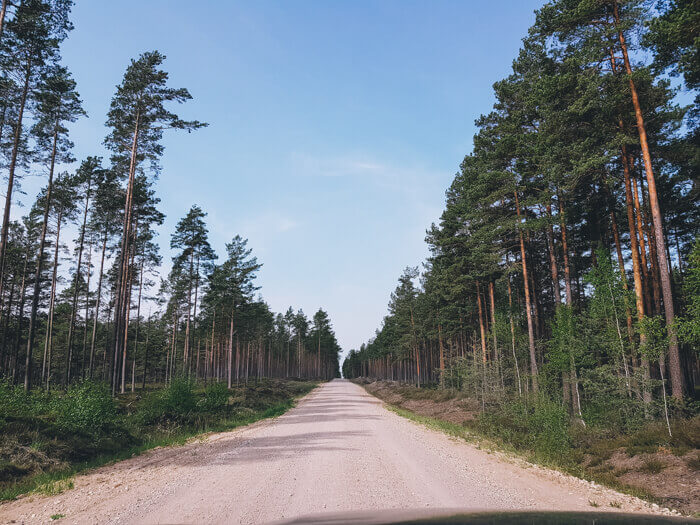
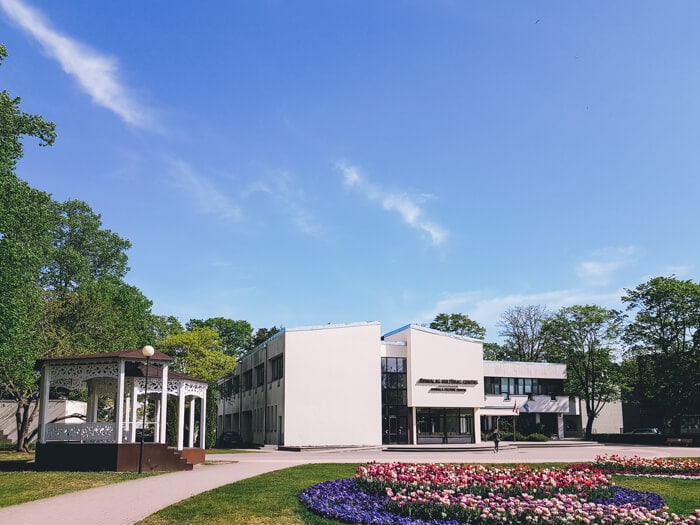
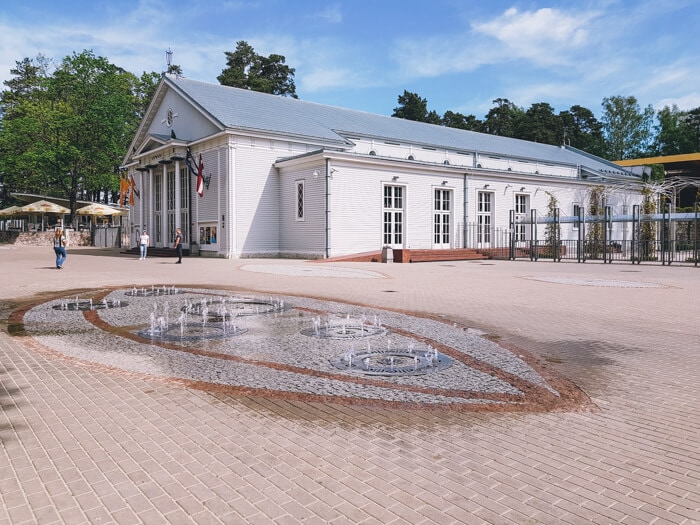
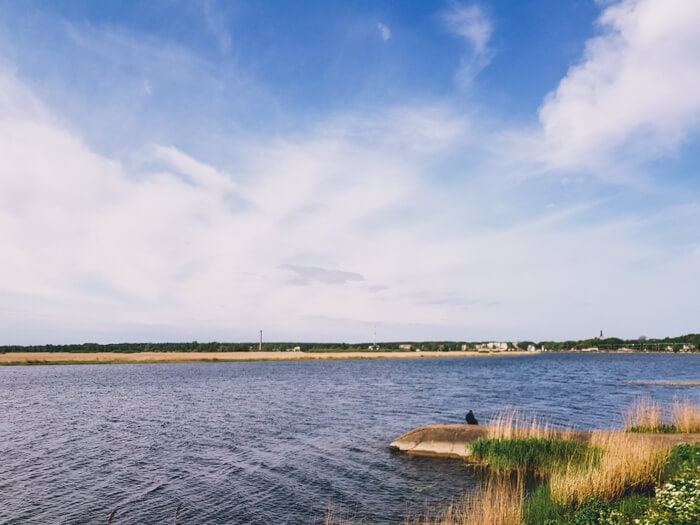
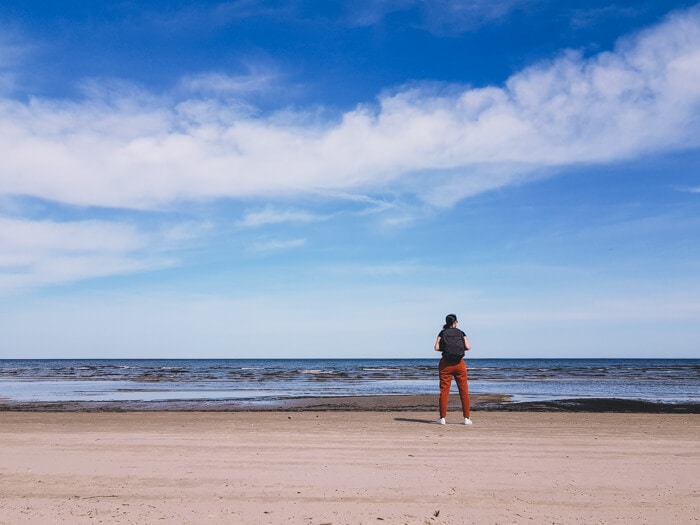
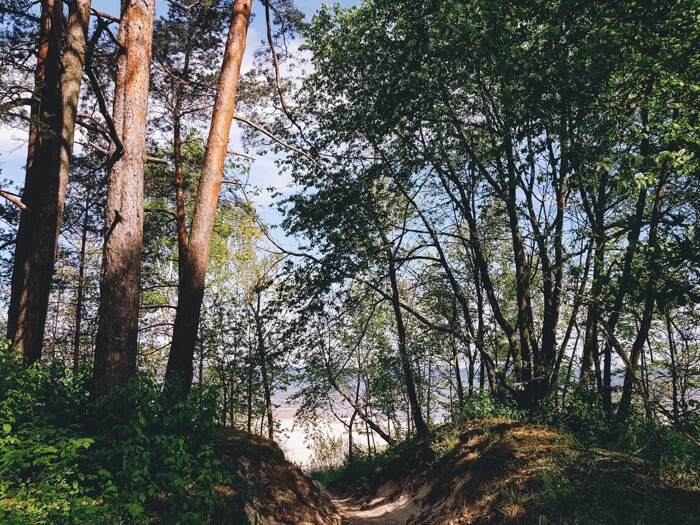
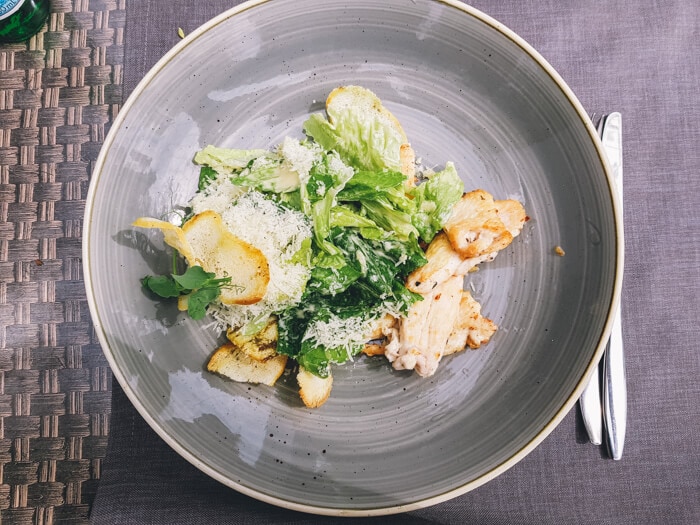
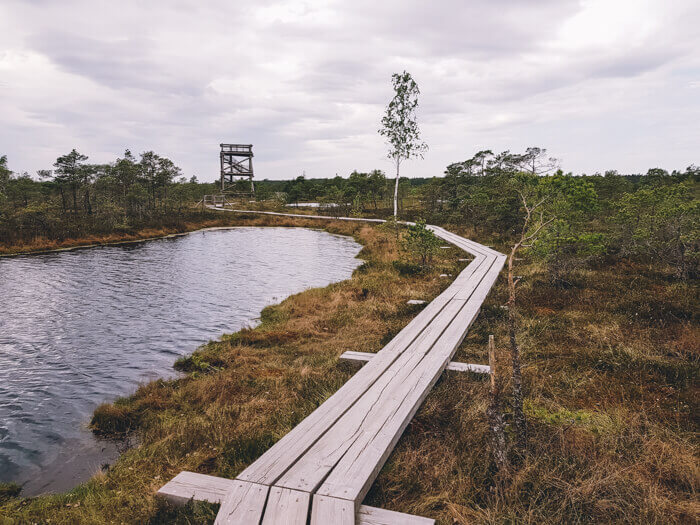
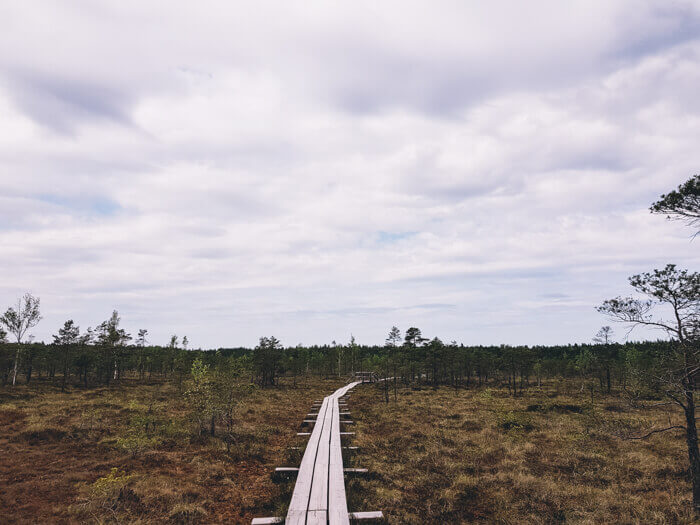
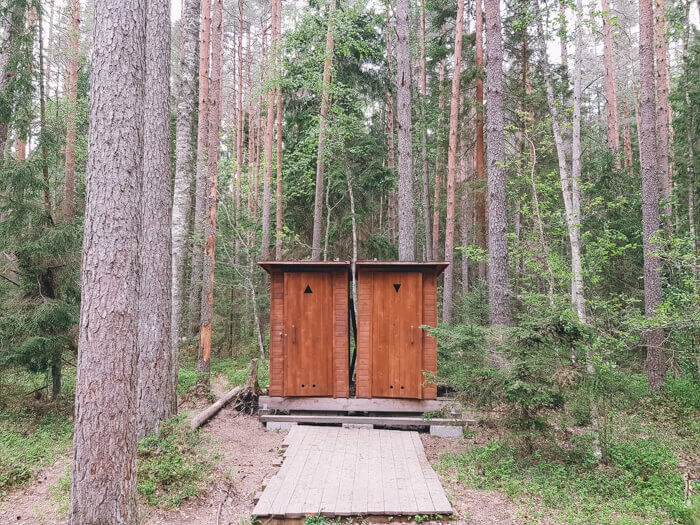
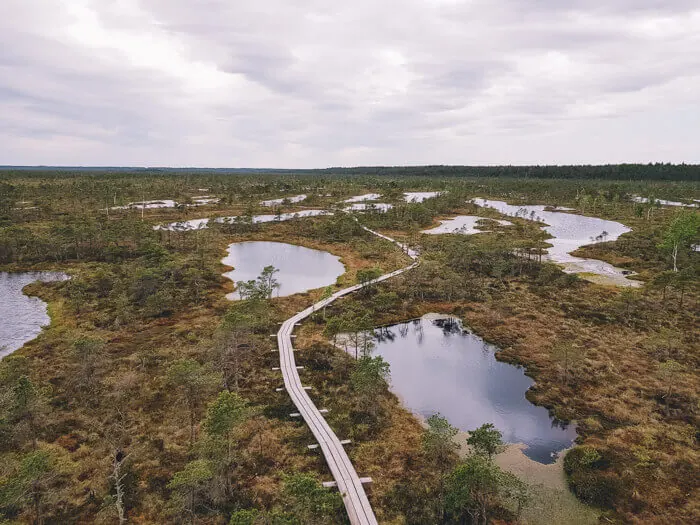
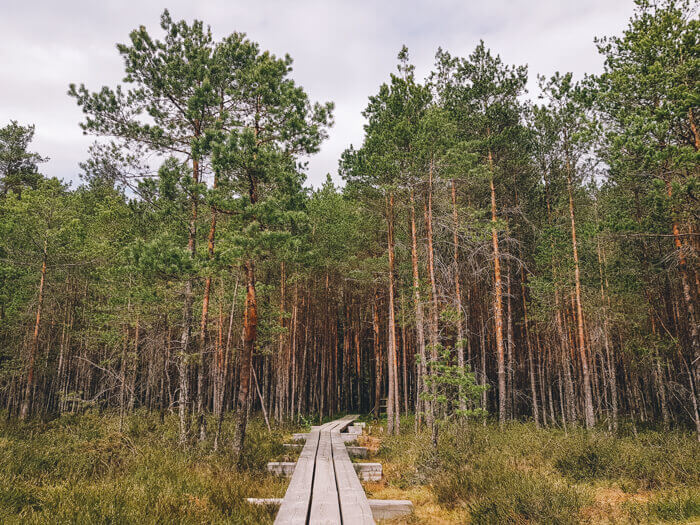
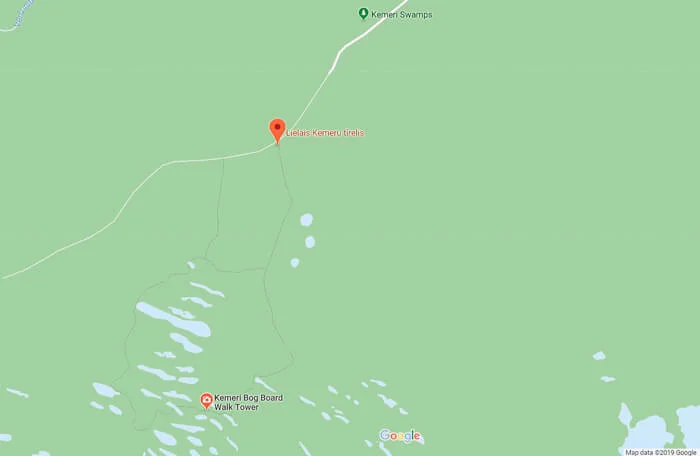
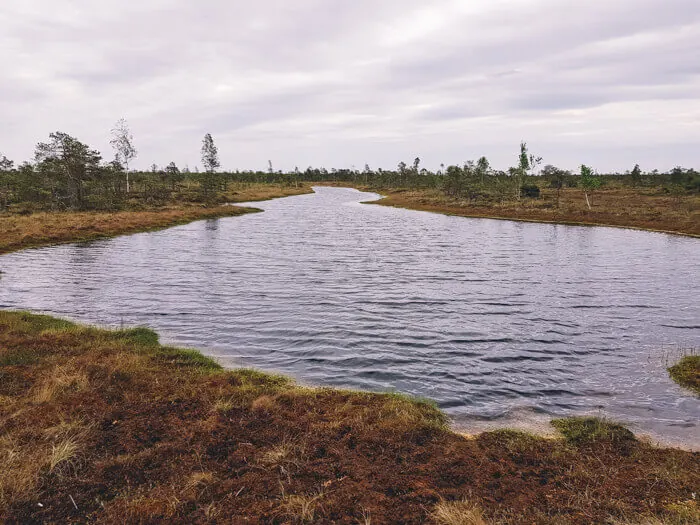
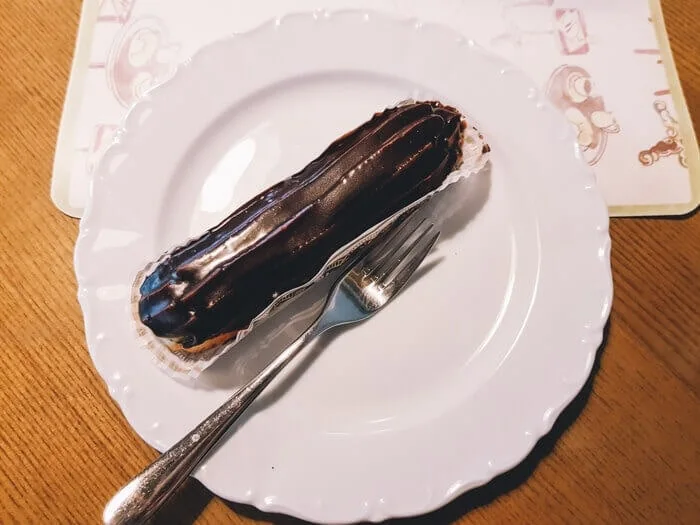
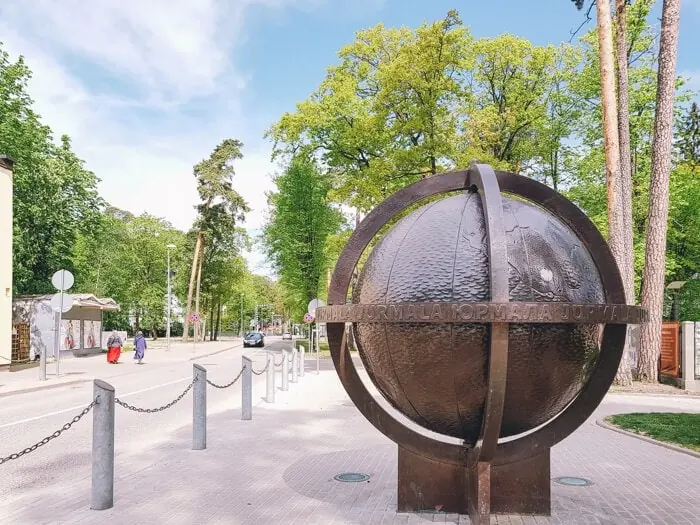
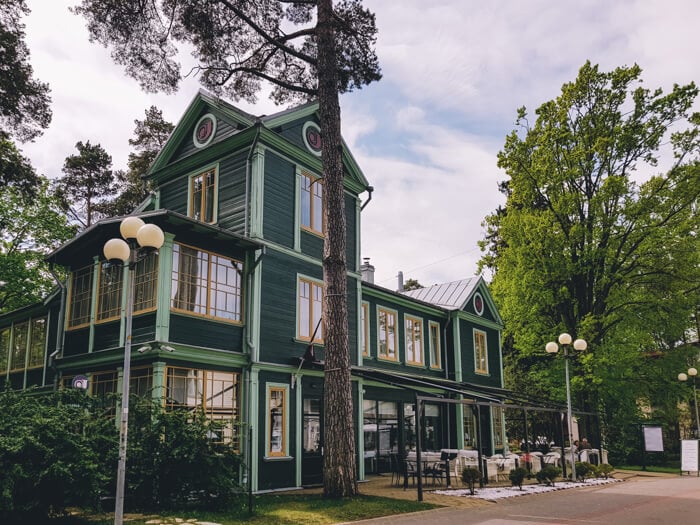
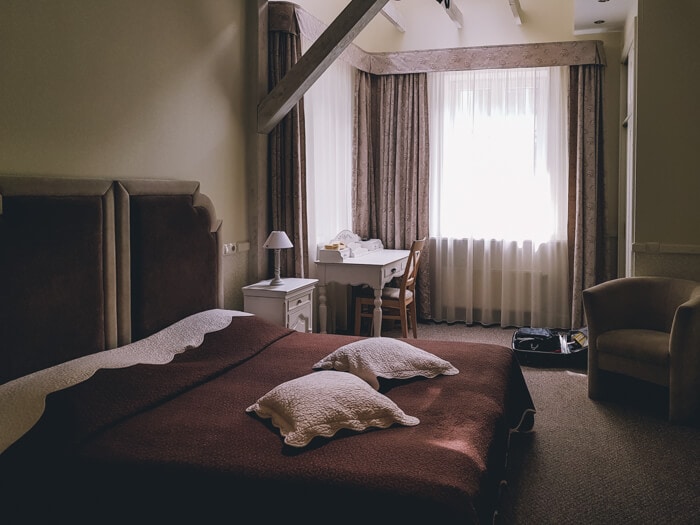
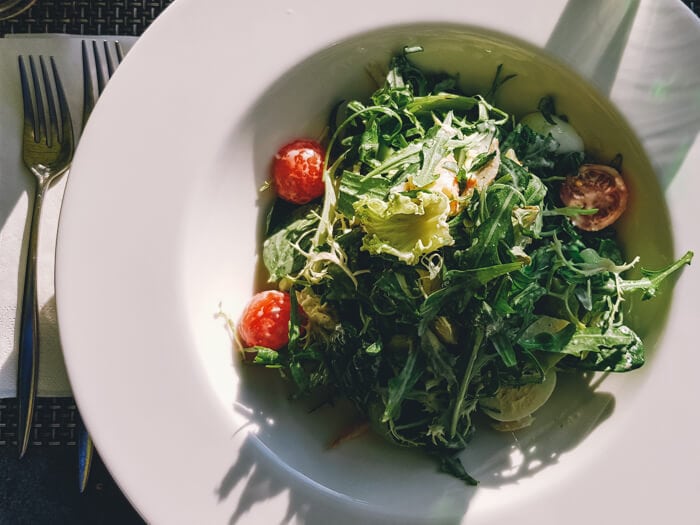
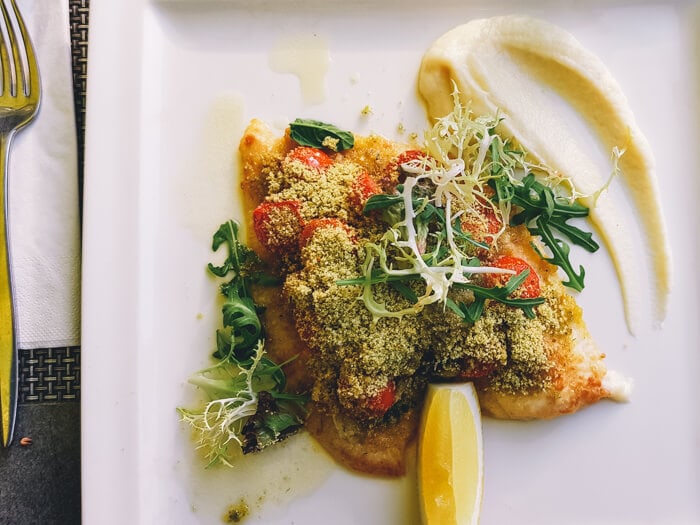
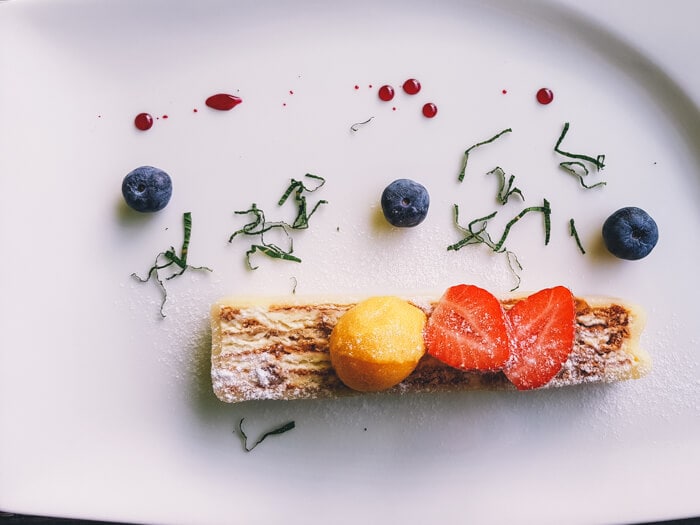
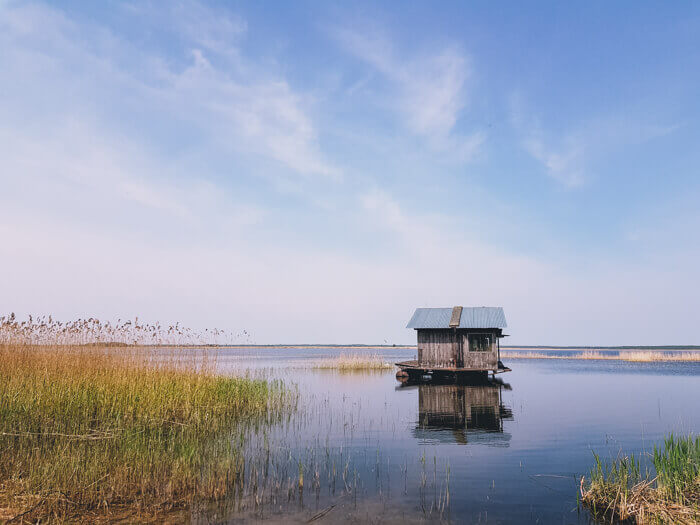
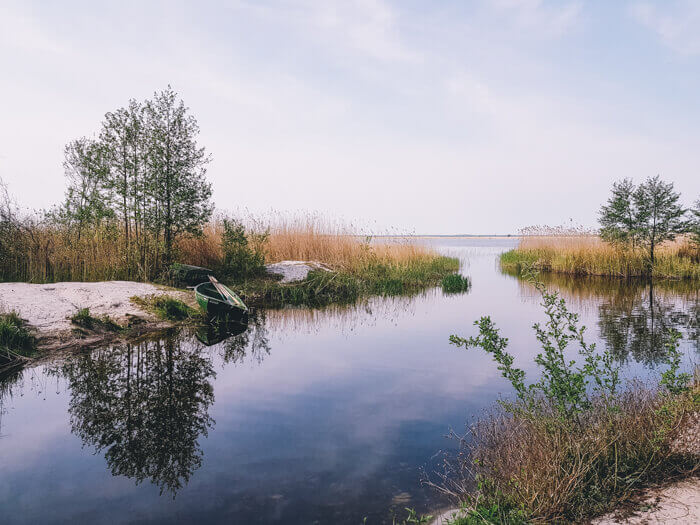
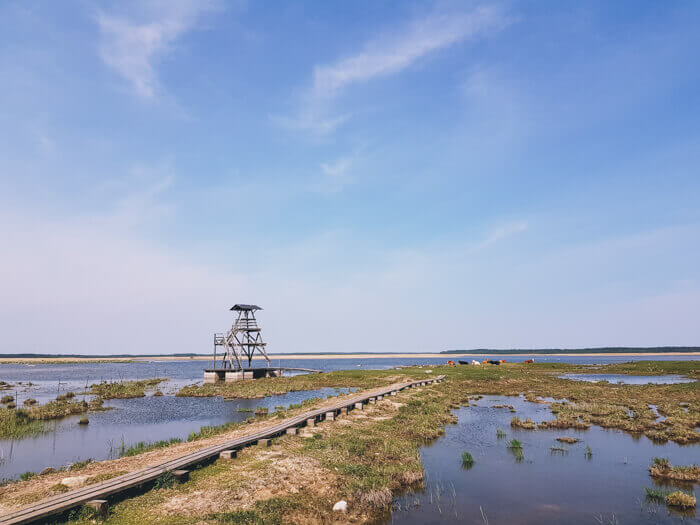
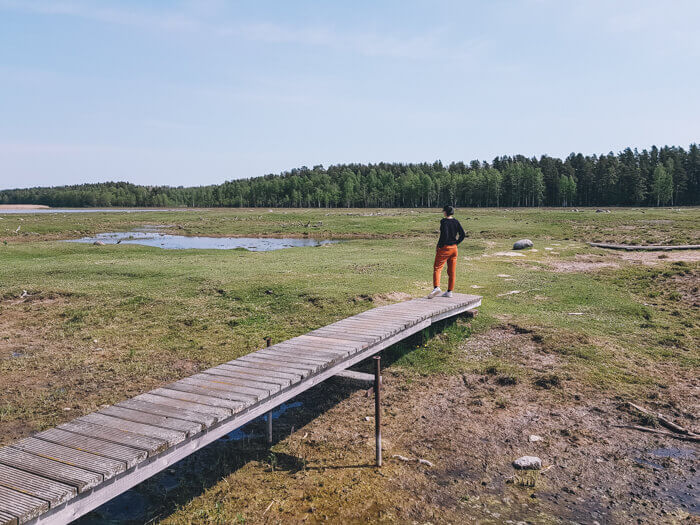
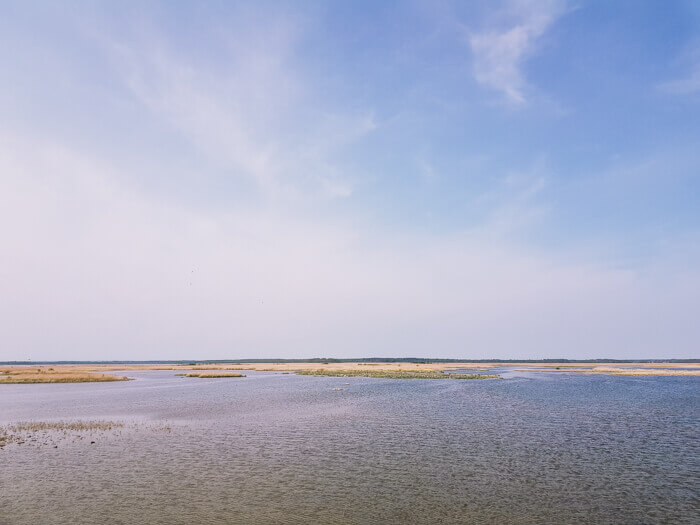
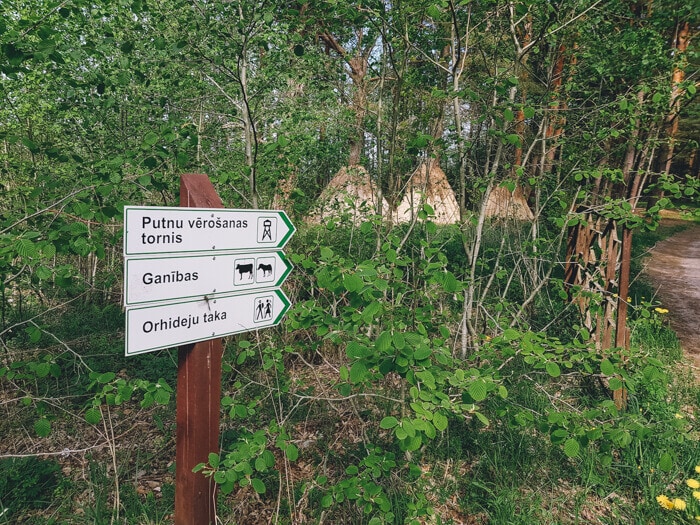
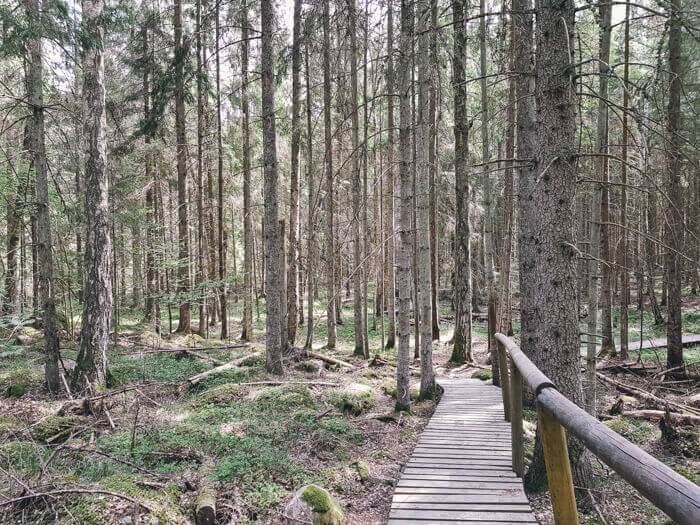
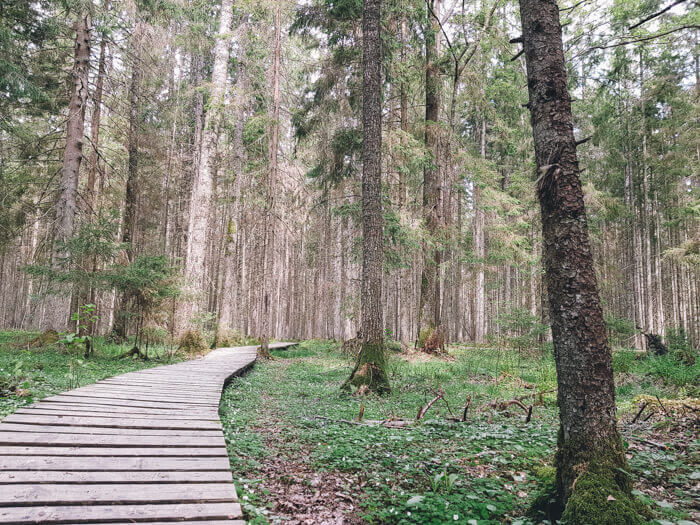
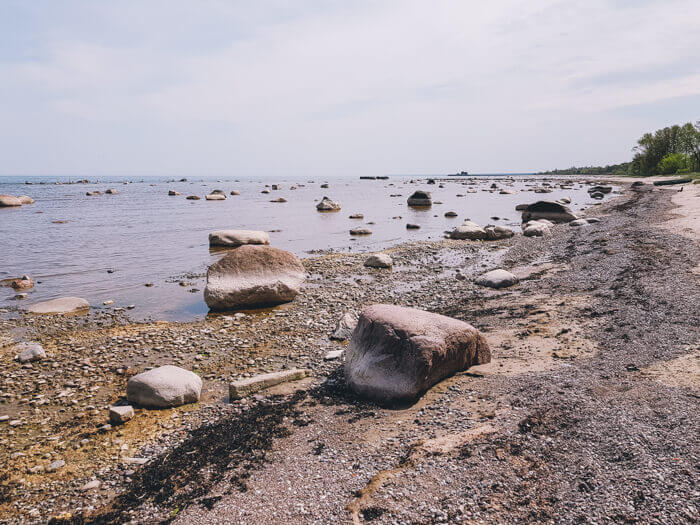
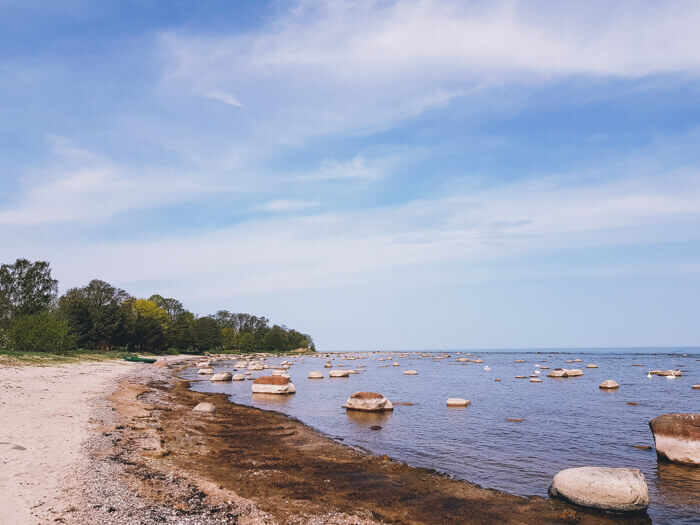
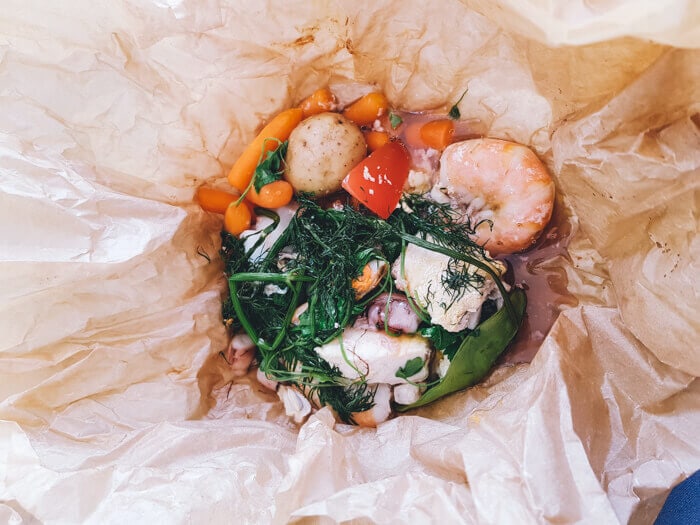
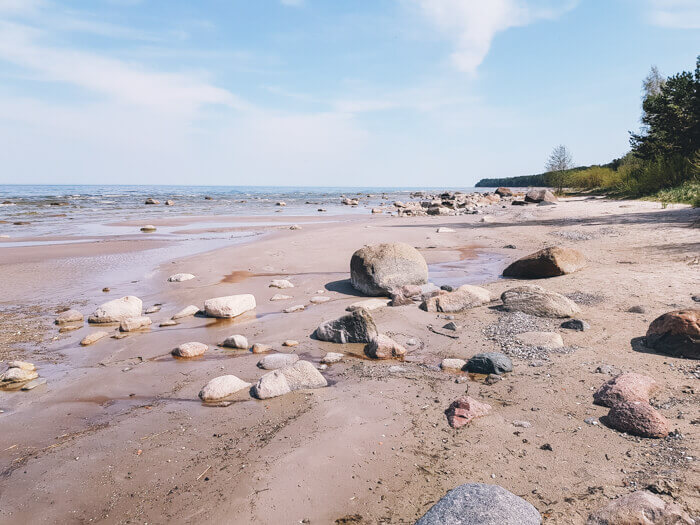
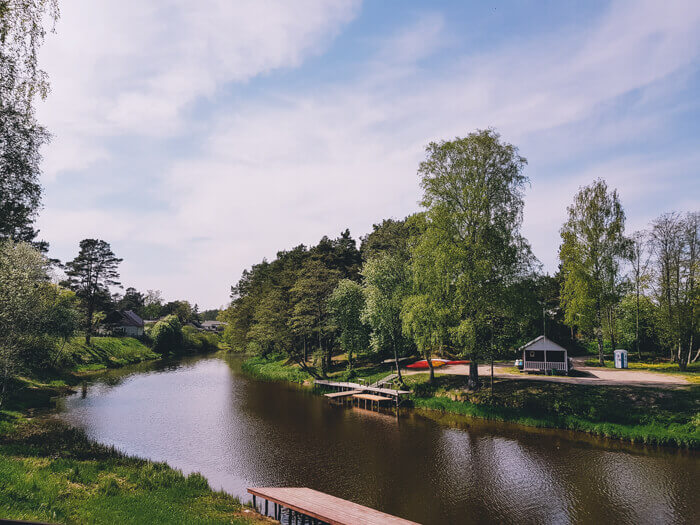
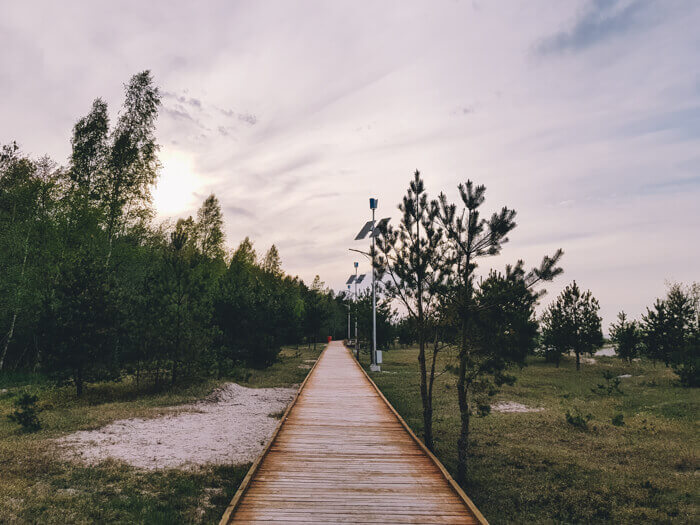
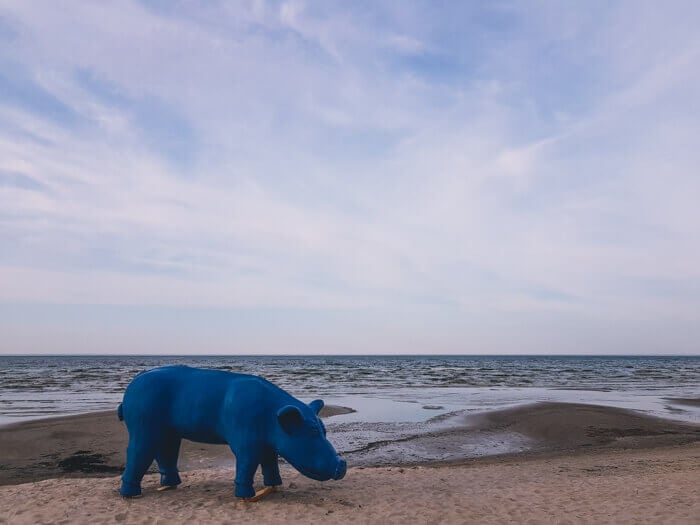
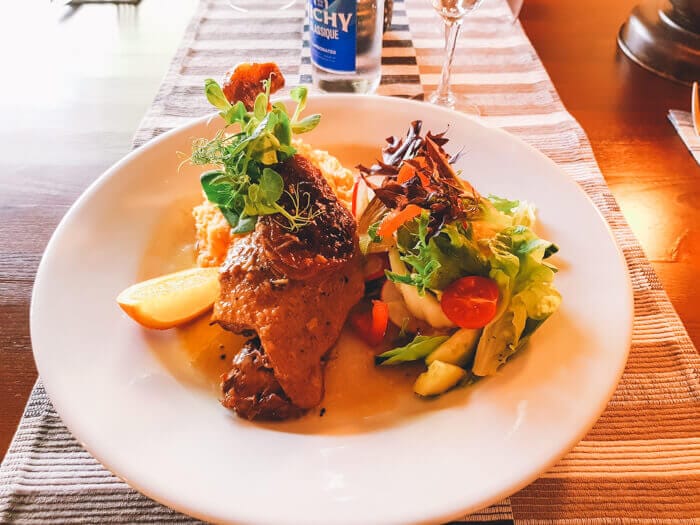
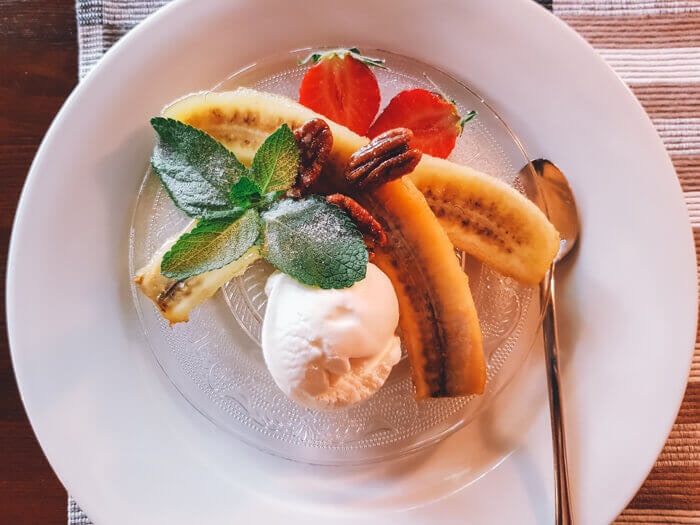
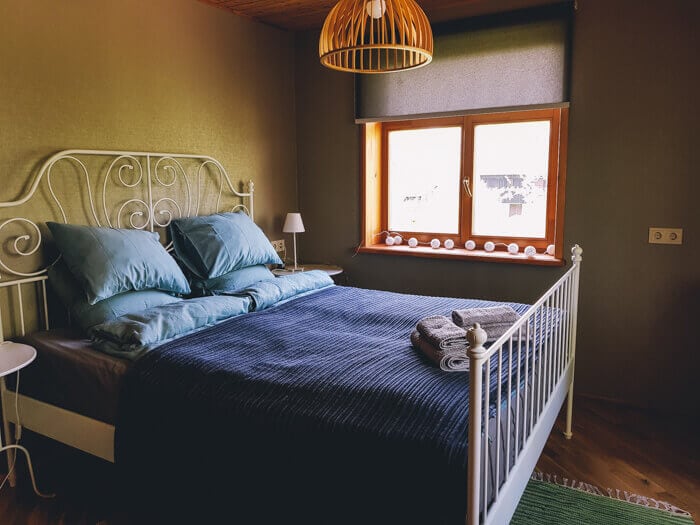
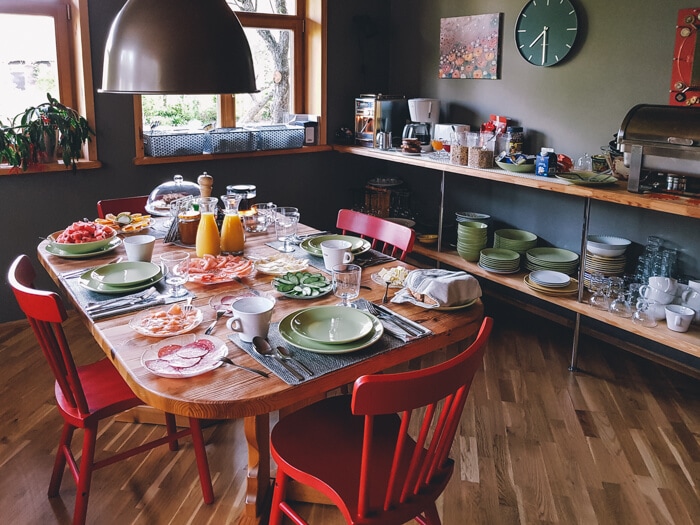
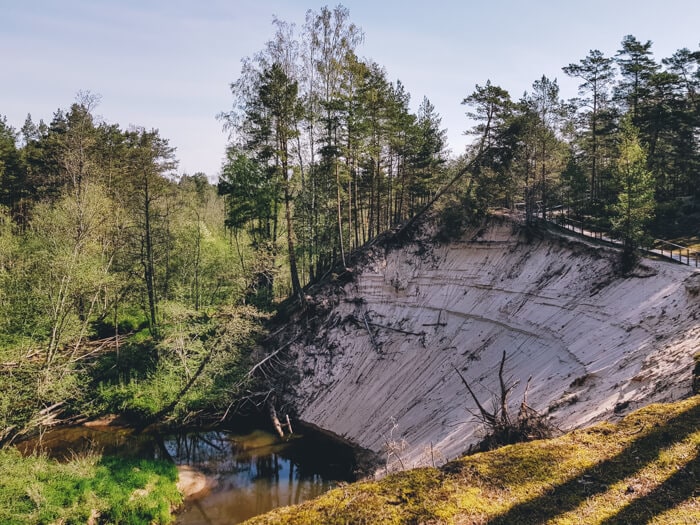
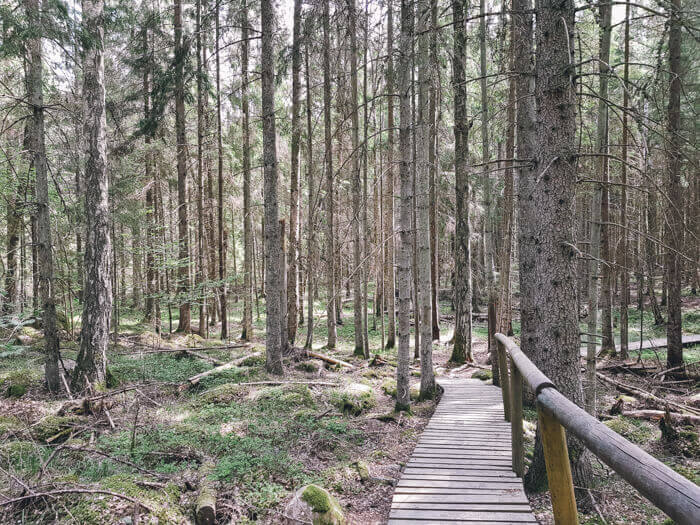
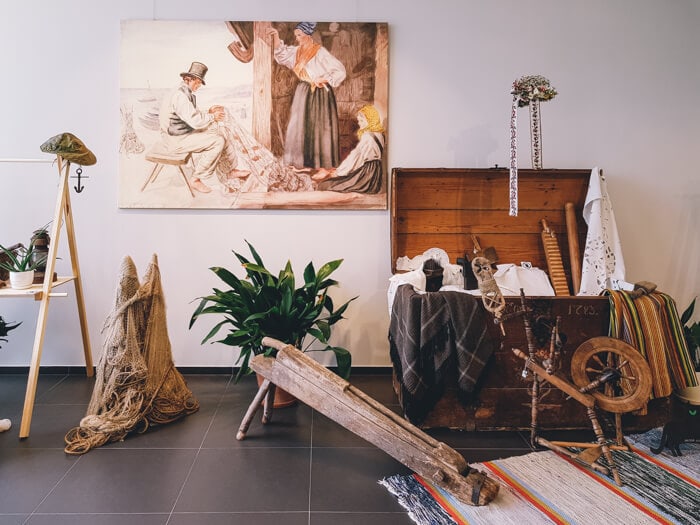
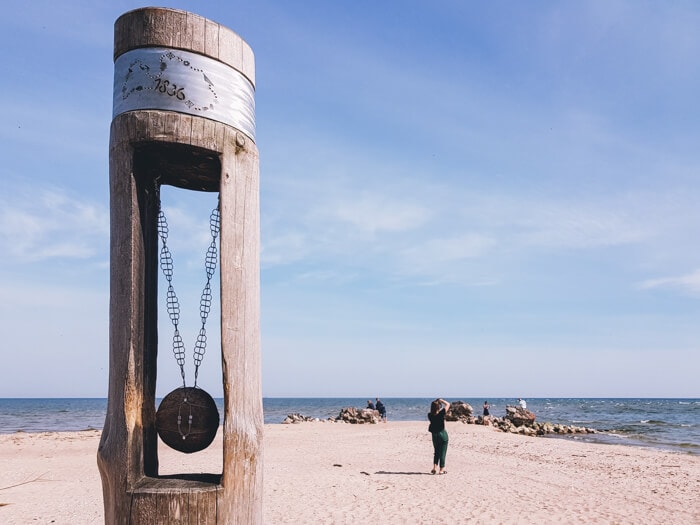
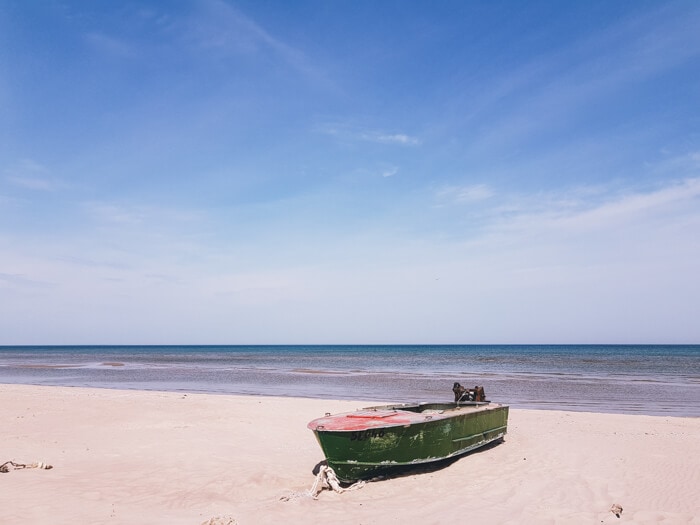
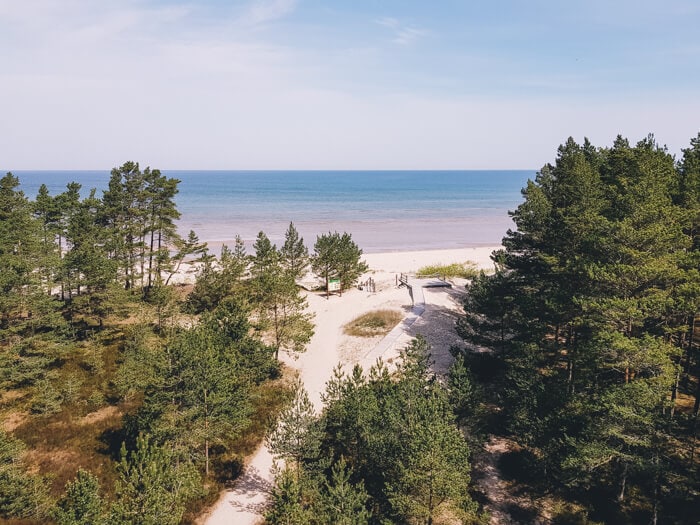
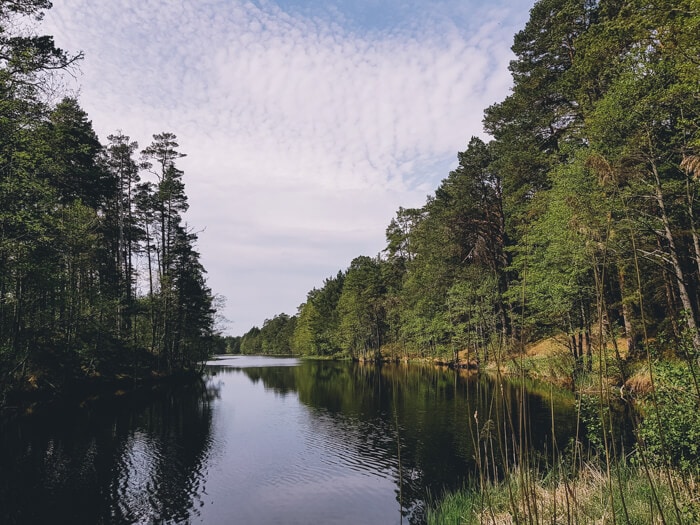
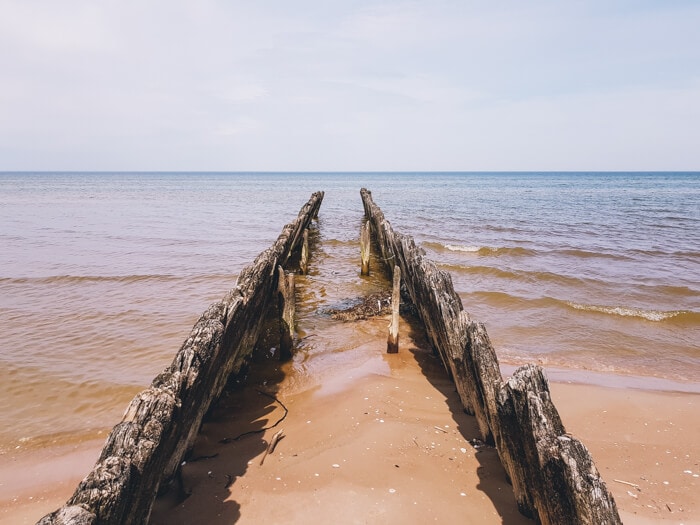
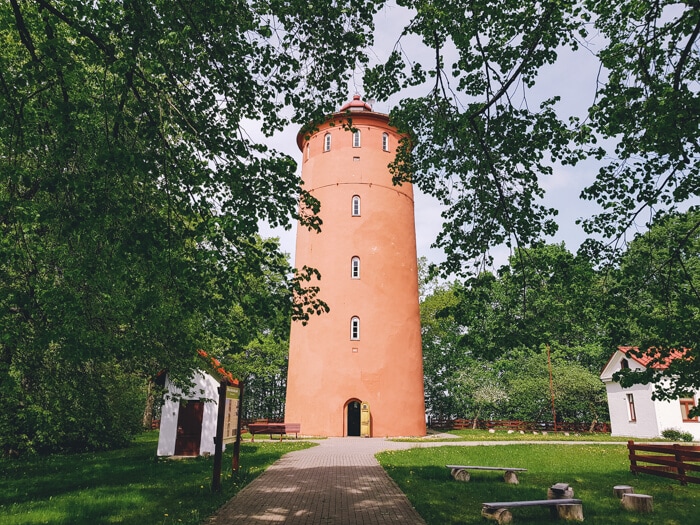
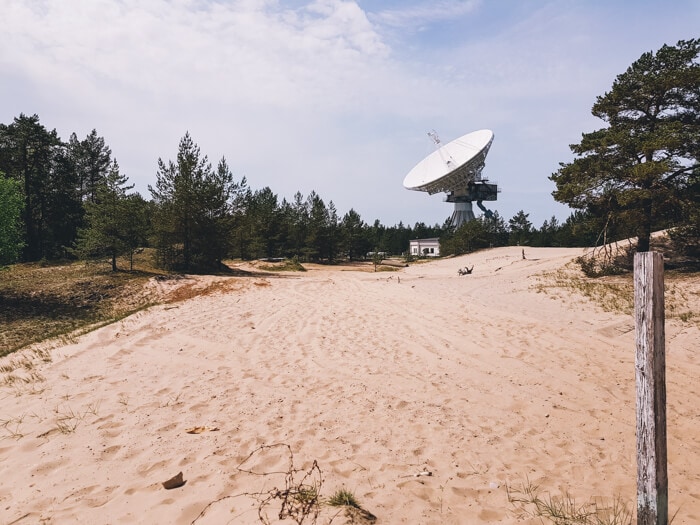
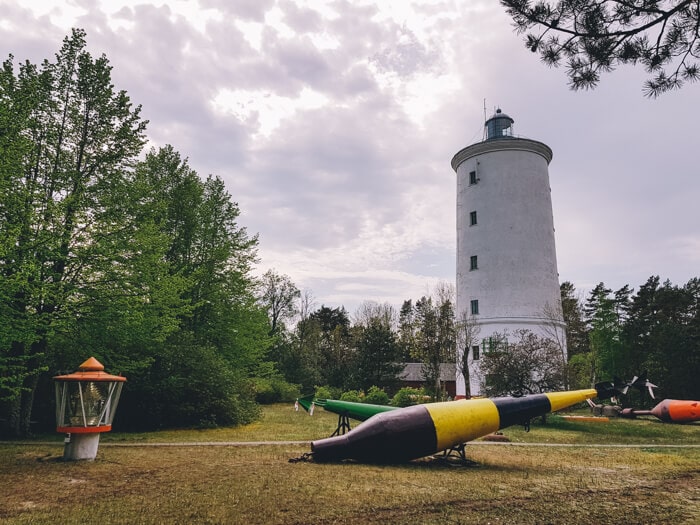
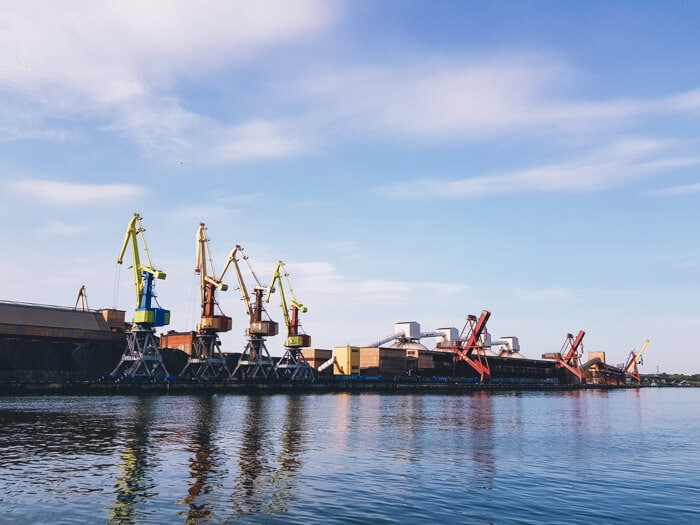
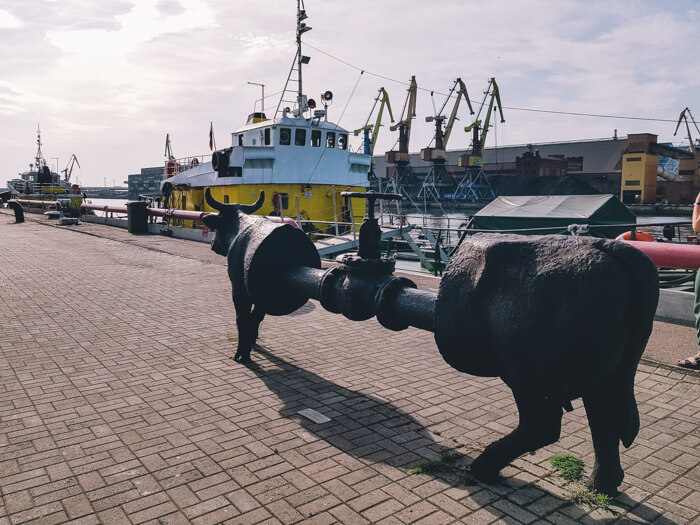
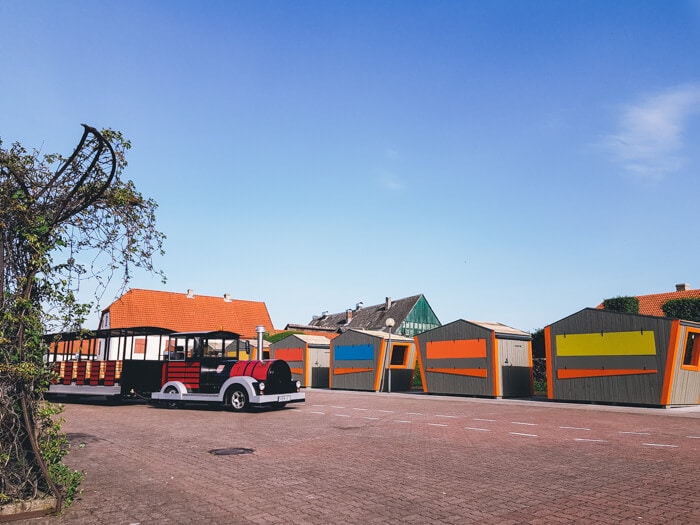
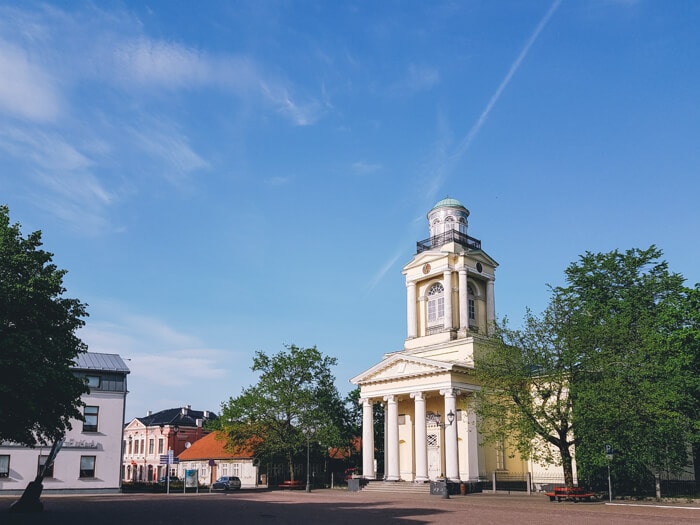
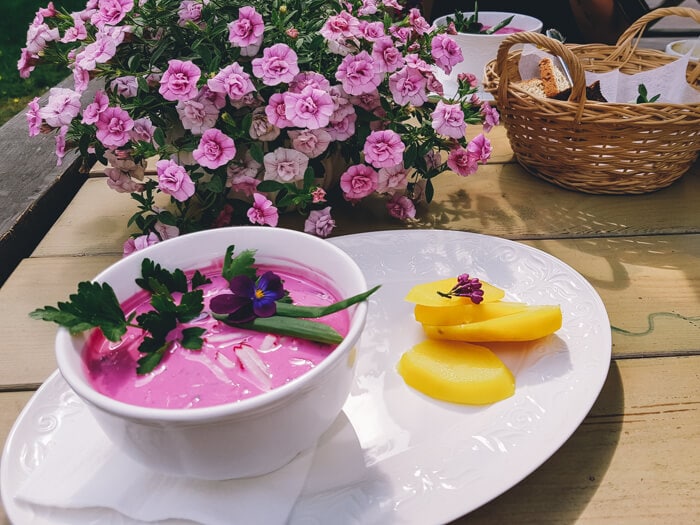
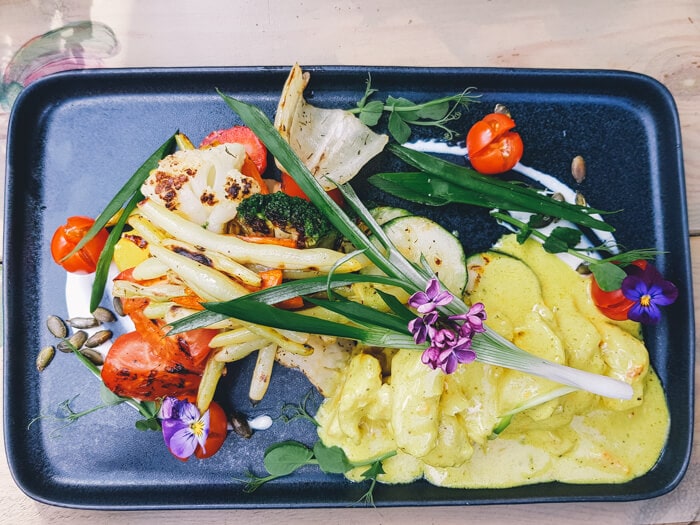
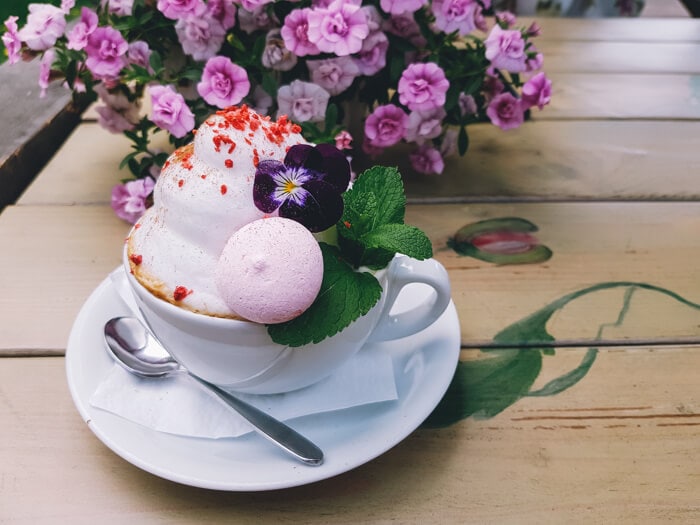
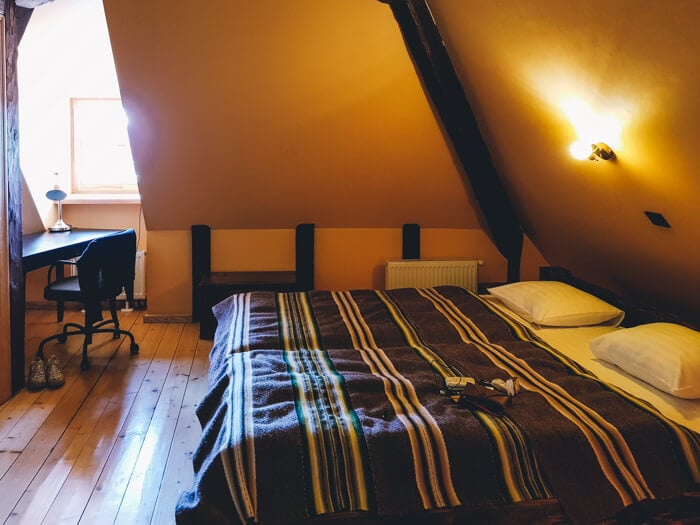
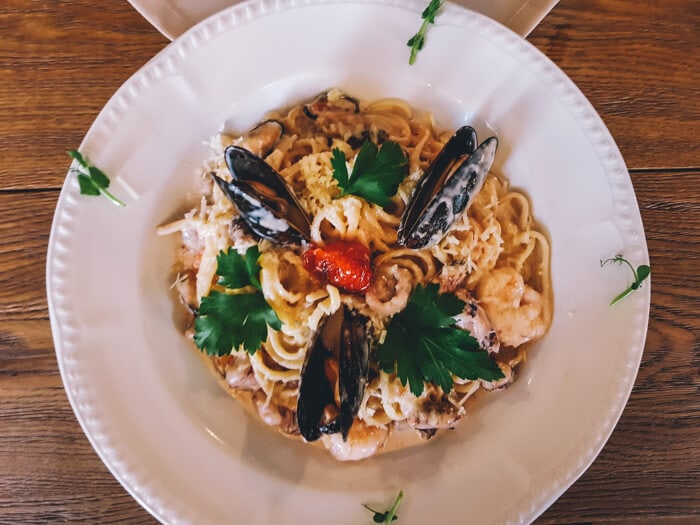
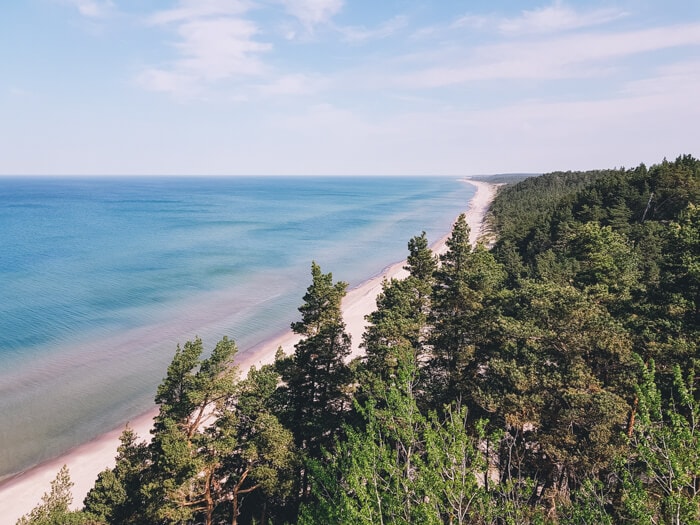
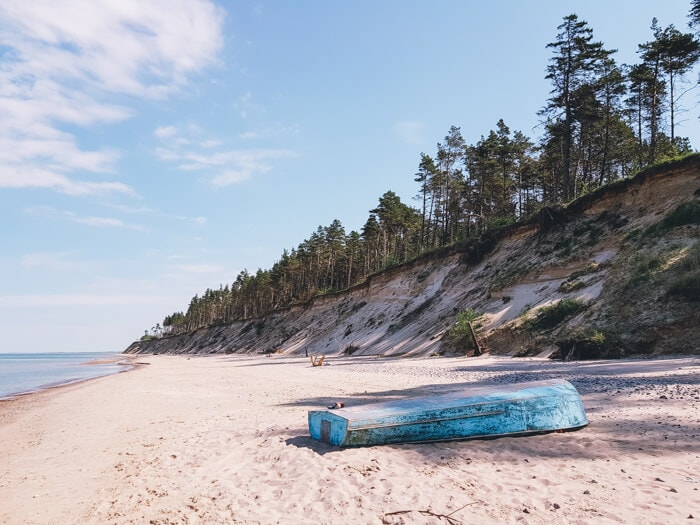
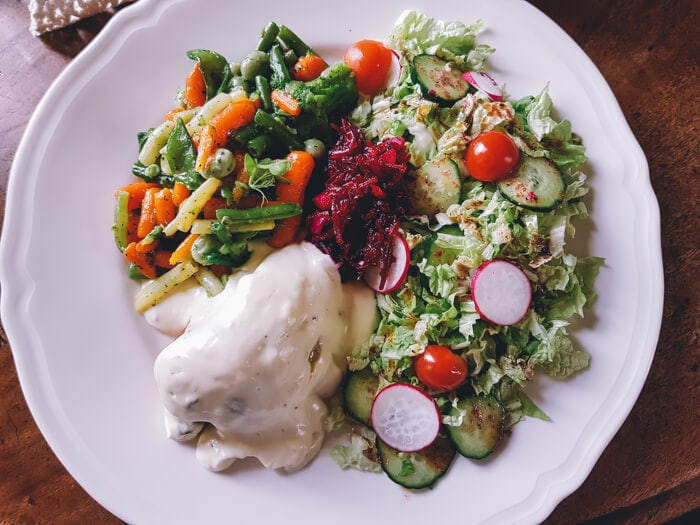
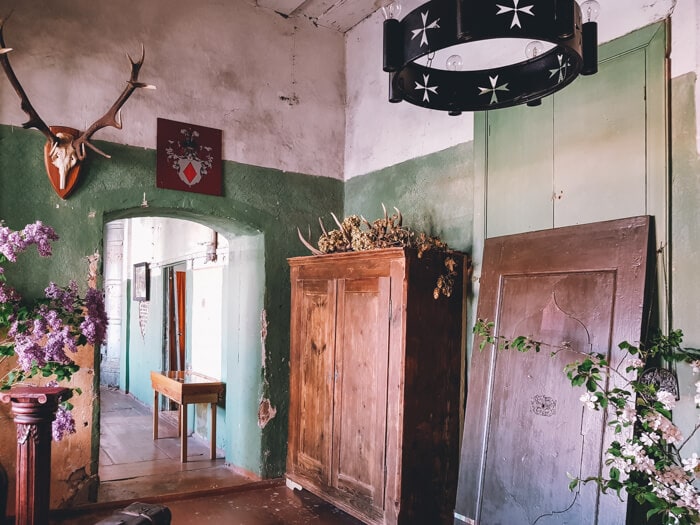
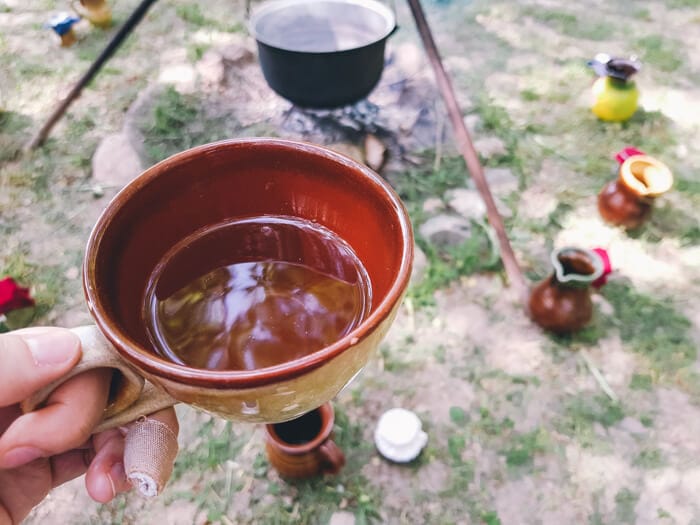
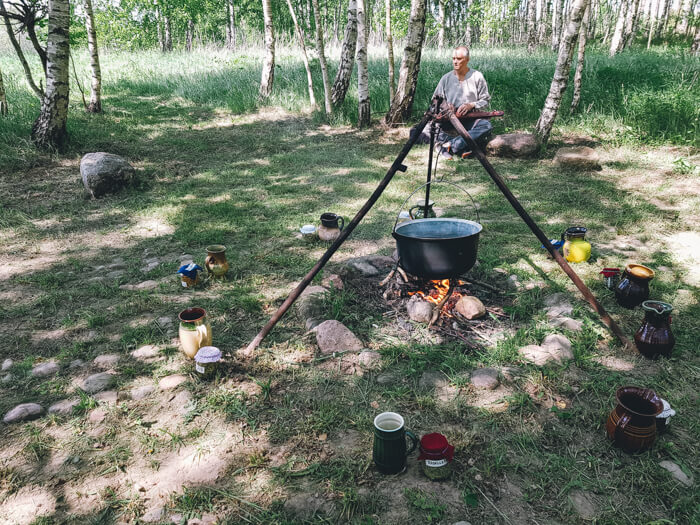
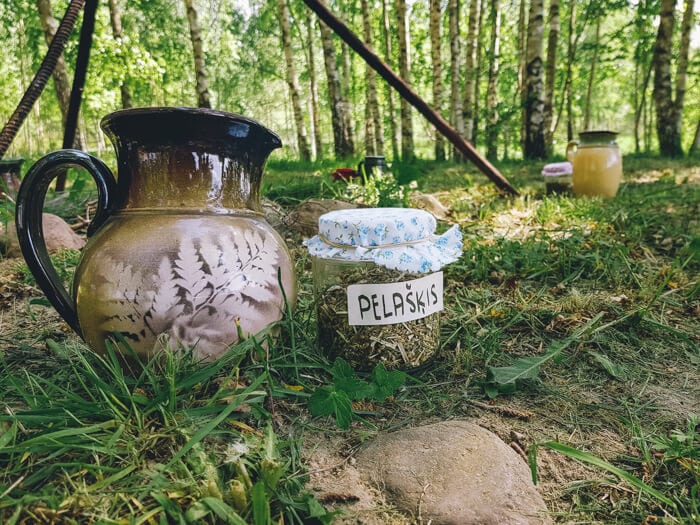
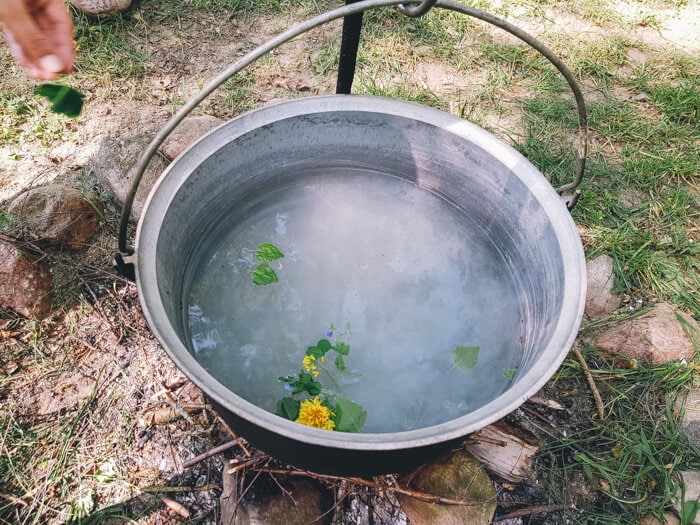
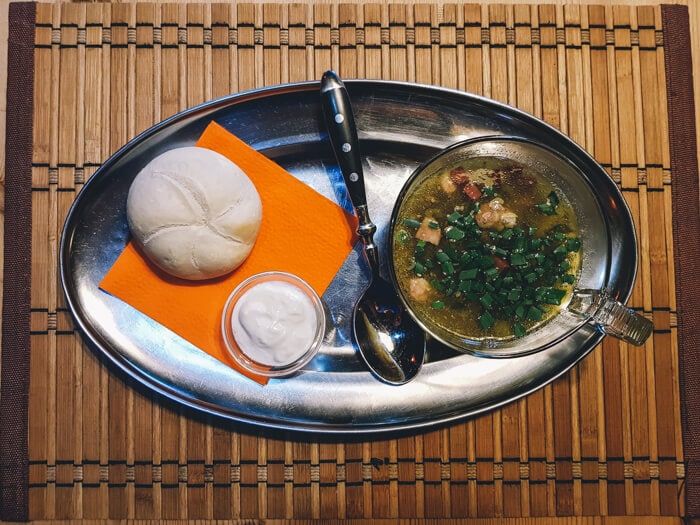
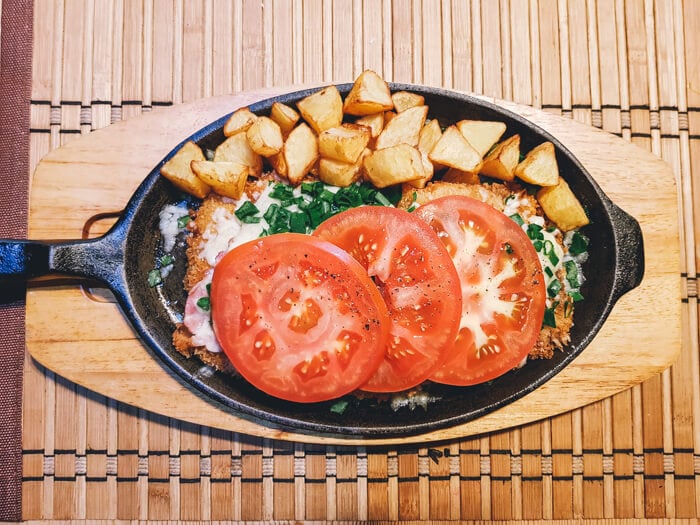
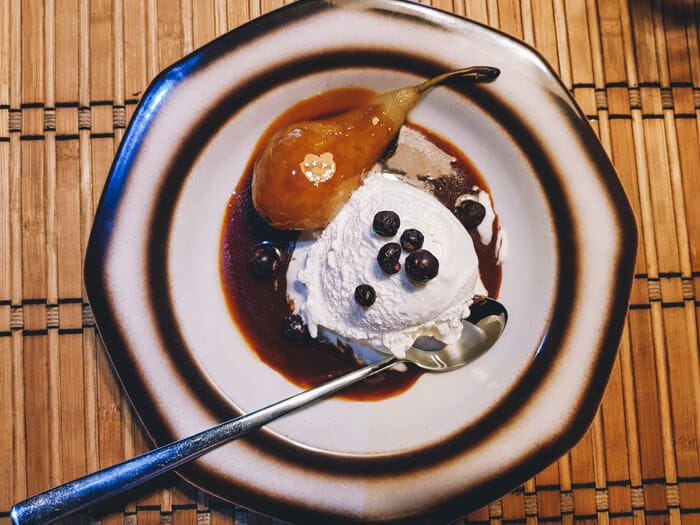
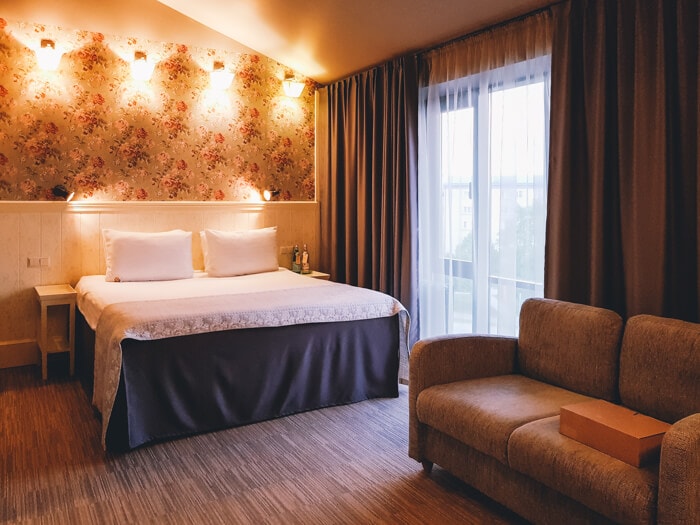
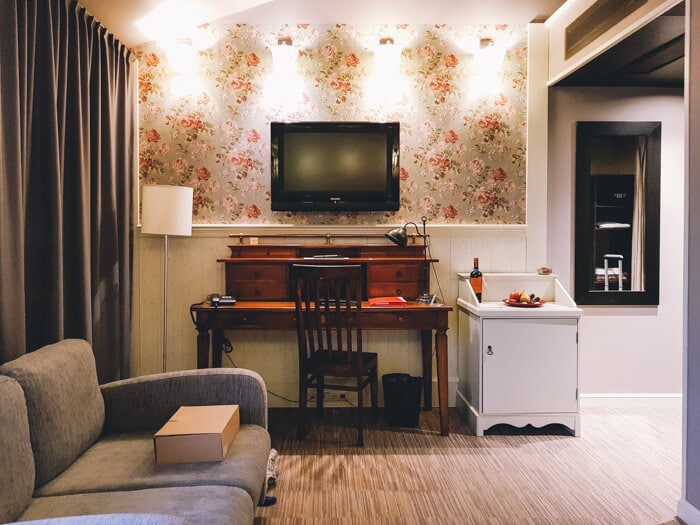
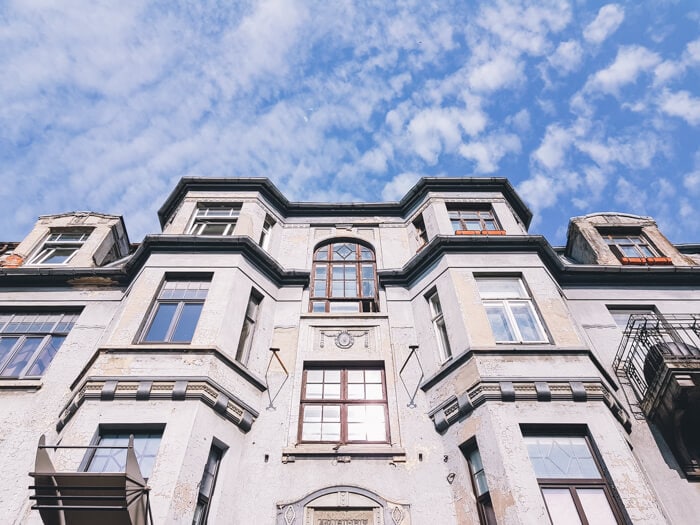
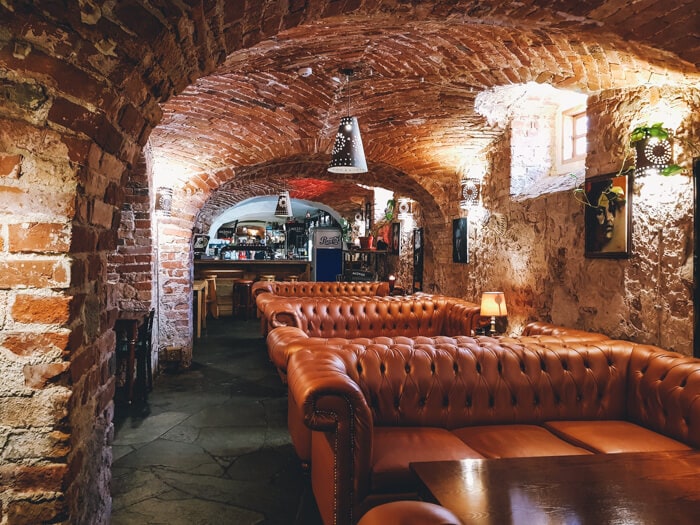
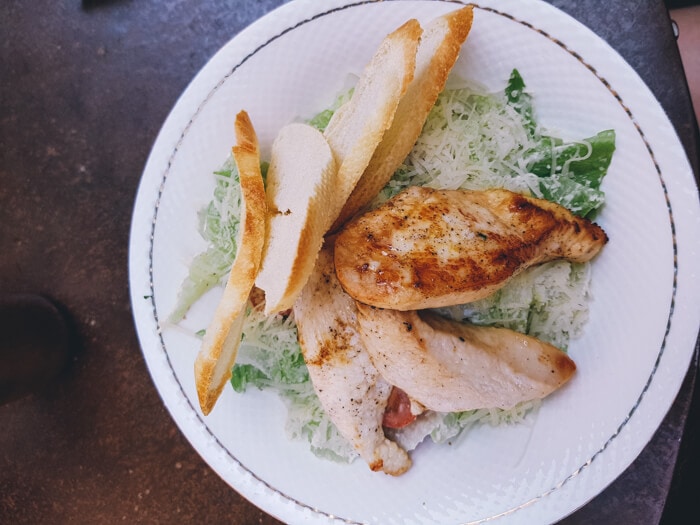
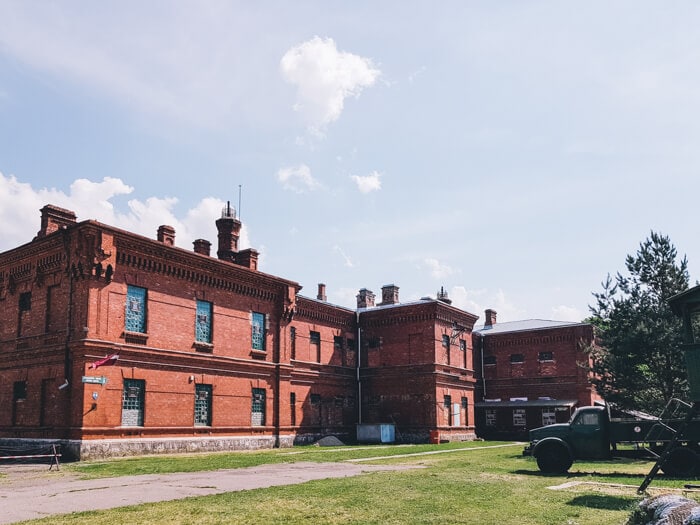
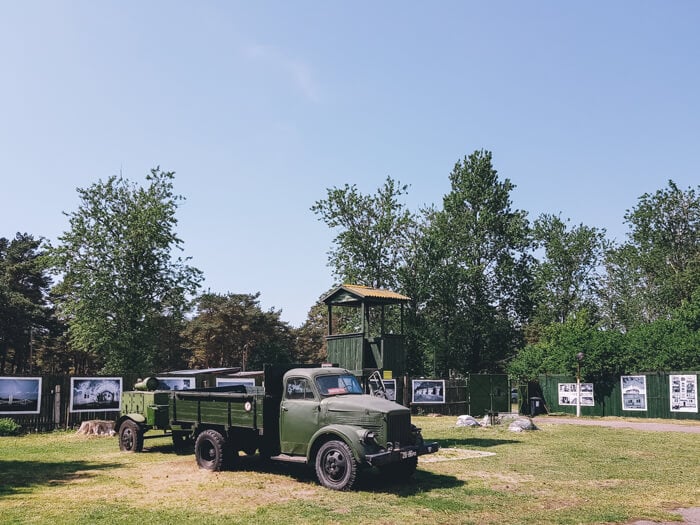
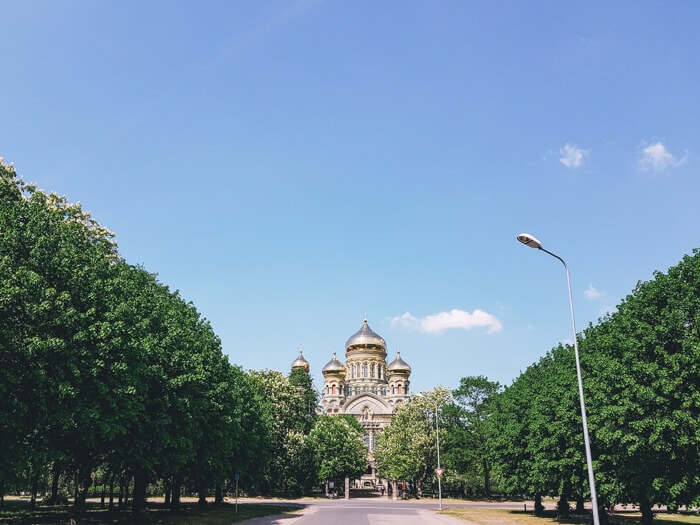
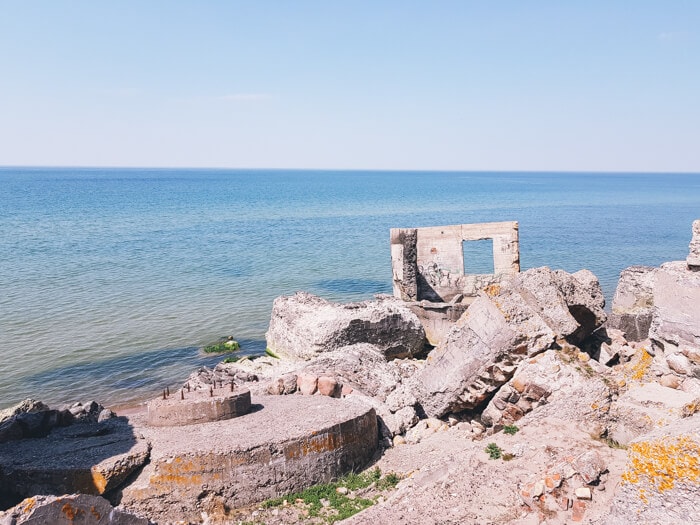
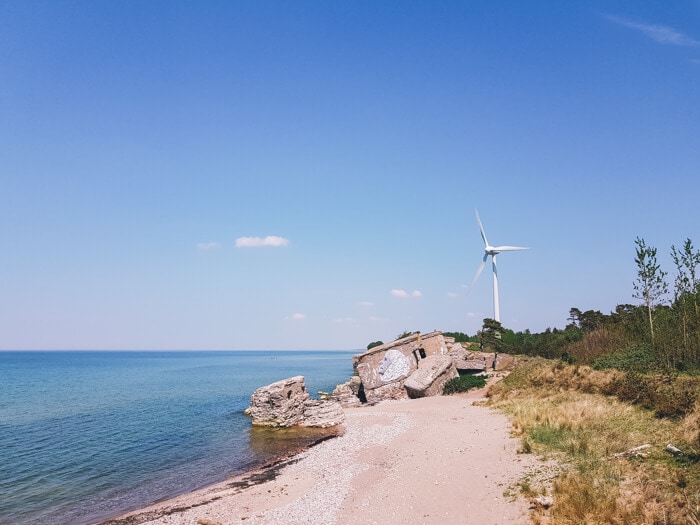
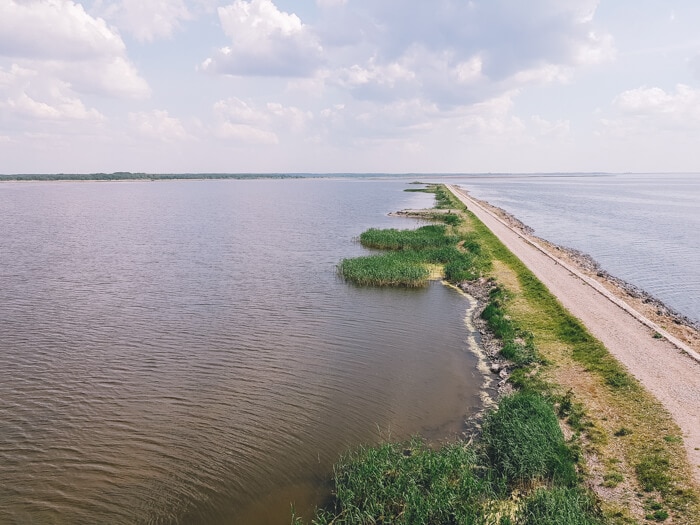
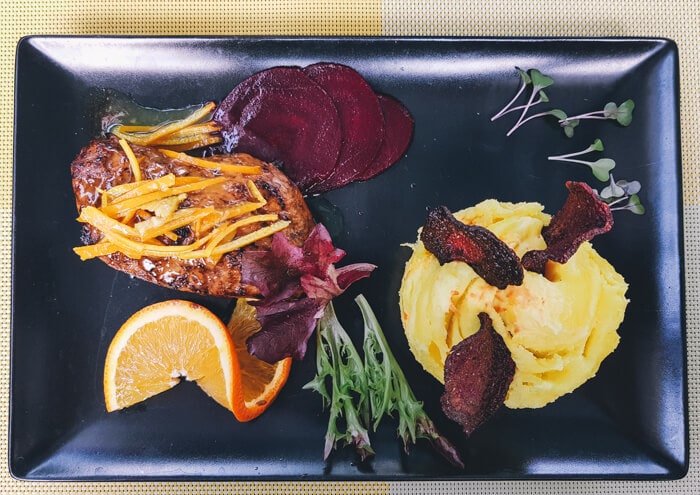
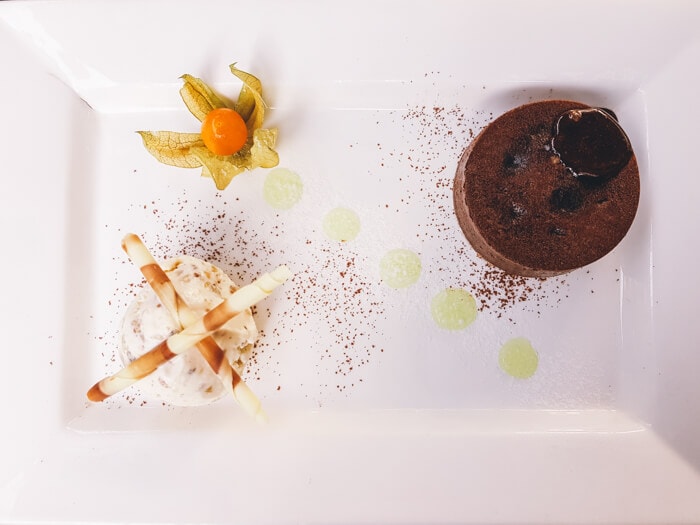
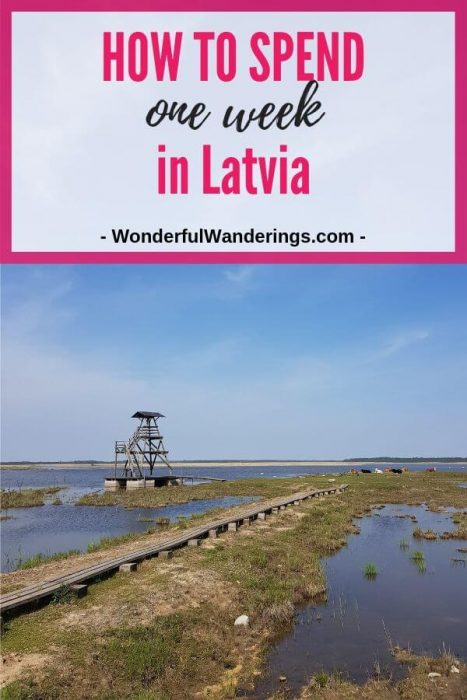

John says
Great blog post on the Latvian coast – really detailed! Will hopefully be able to put this to good use this summer.
Sofie says
Oh that would be lovely! It’s such a beautiful area.
Karoliina says
How did you find the tea ceremony with Dace?
Sofie says
I really enjoyed it. I loved that it was out in nature and I learned so much both about herbs and about Latvian herbal traditions at the same time. I’d recommend it.
Karoliina says
Sorry, I meant, how did you contact her about the tea ceremony? I tried to find information online but I wasn’t able to. Maybe because it’s all in Latvian?
Sofie says
Oh Sorry! My trip was organized by the Latvian tourism board. I suggest reaching out to them as they’ll have the contact details.